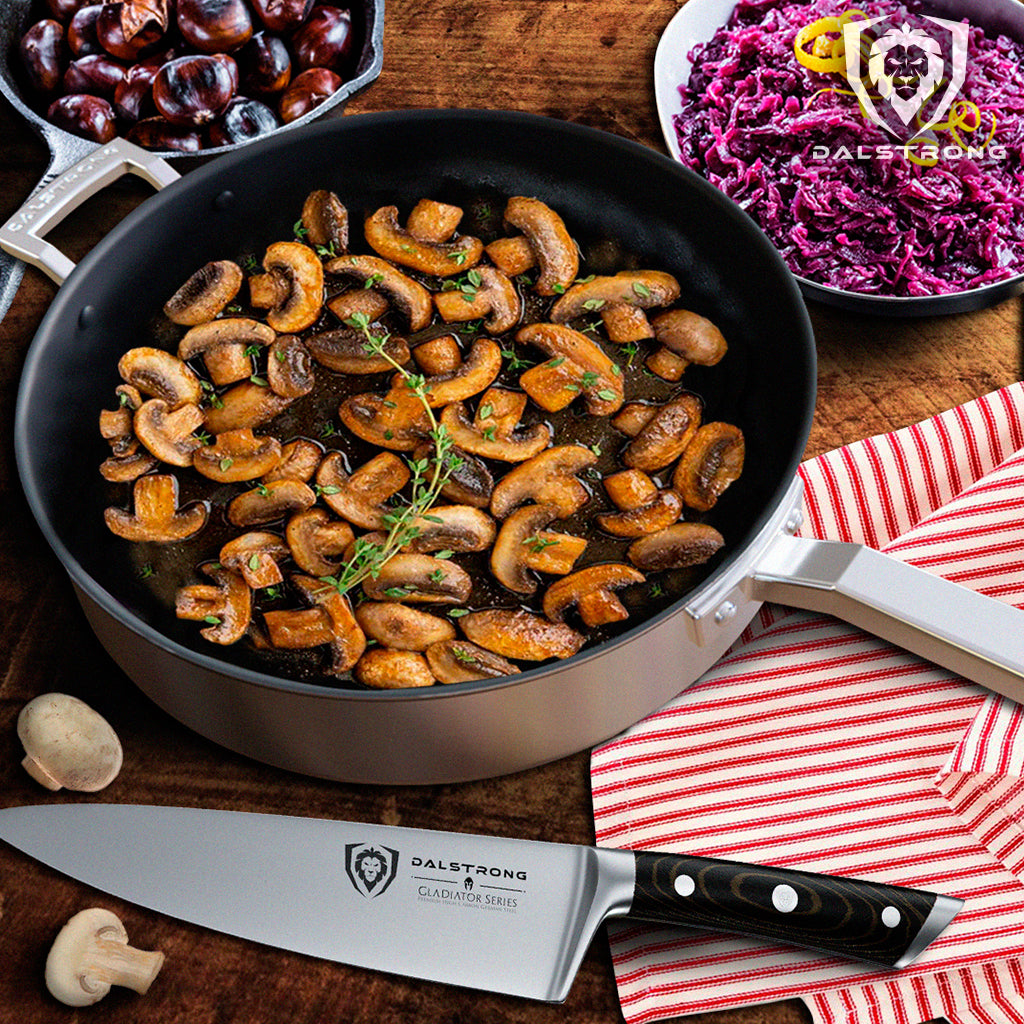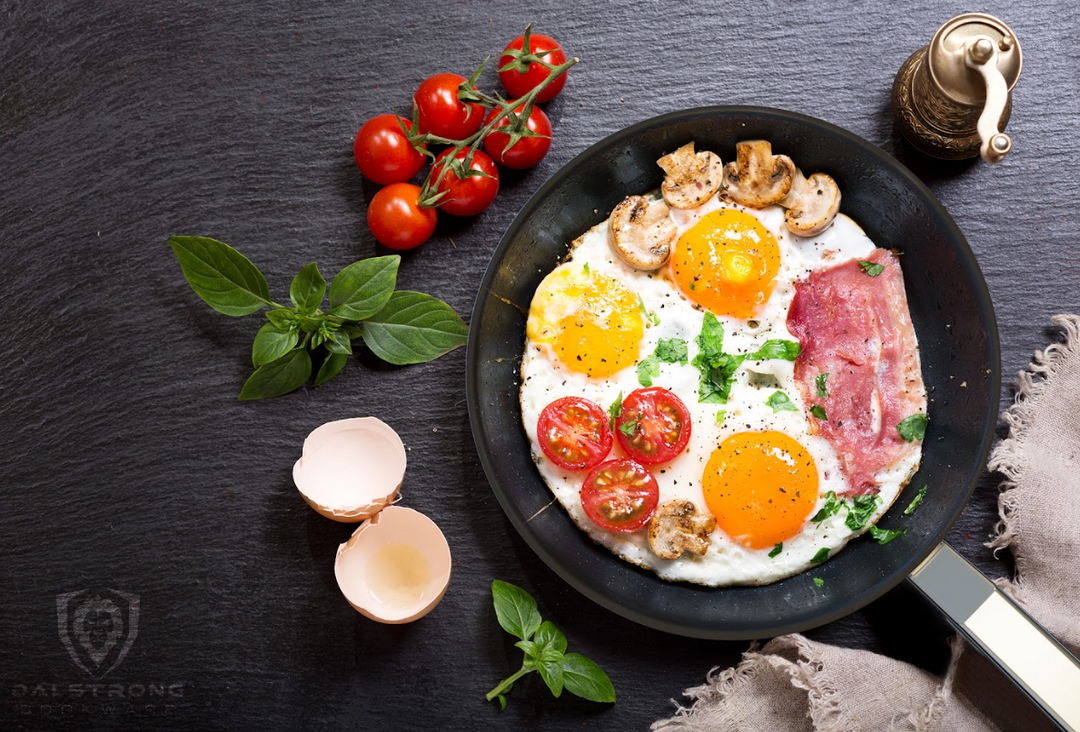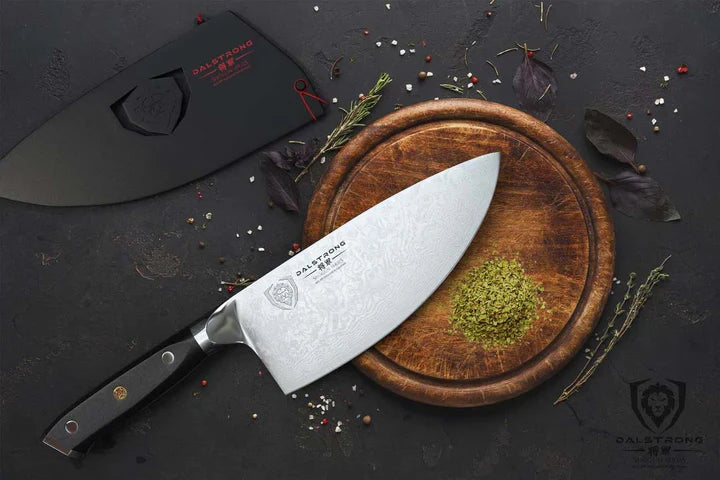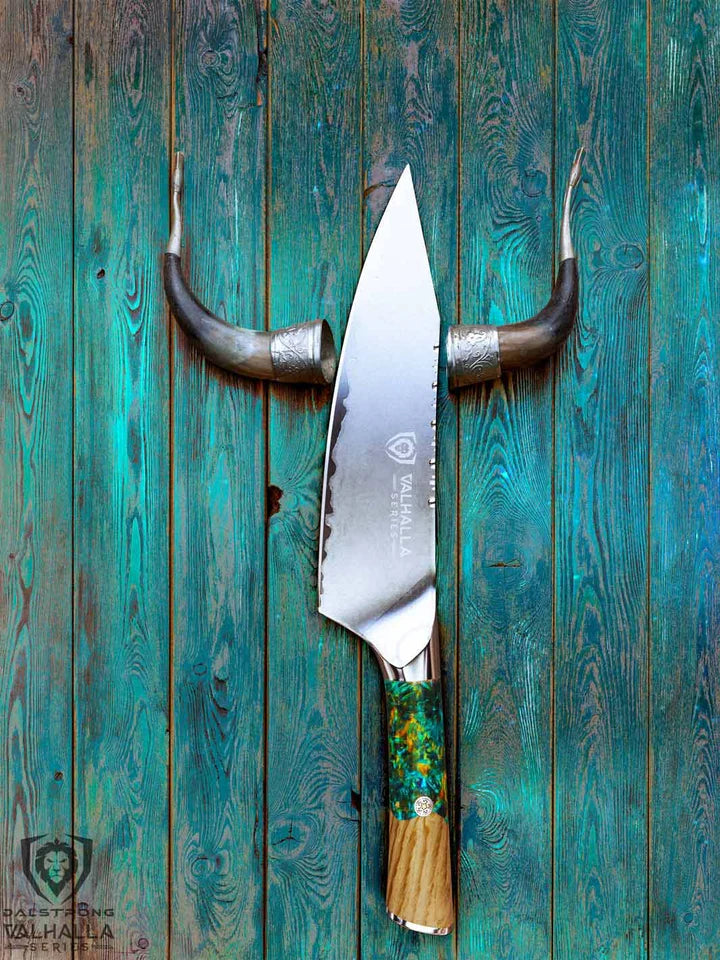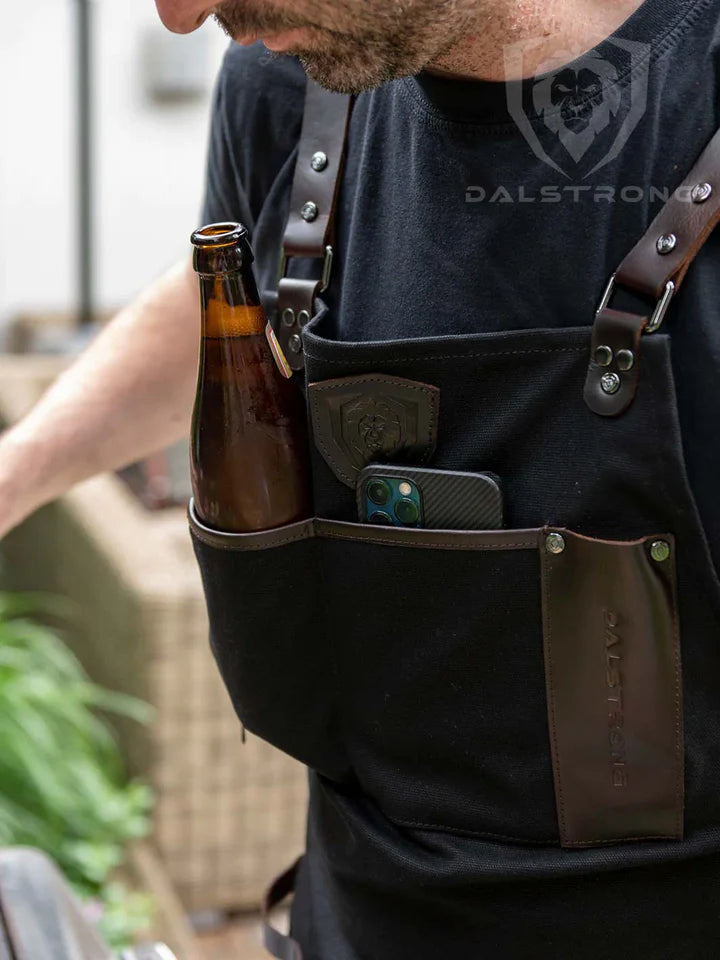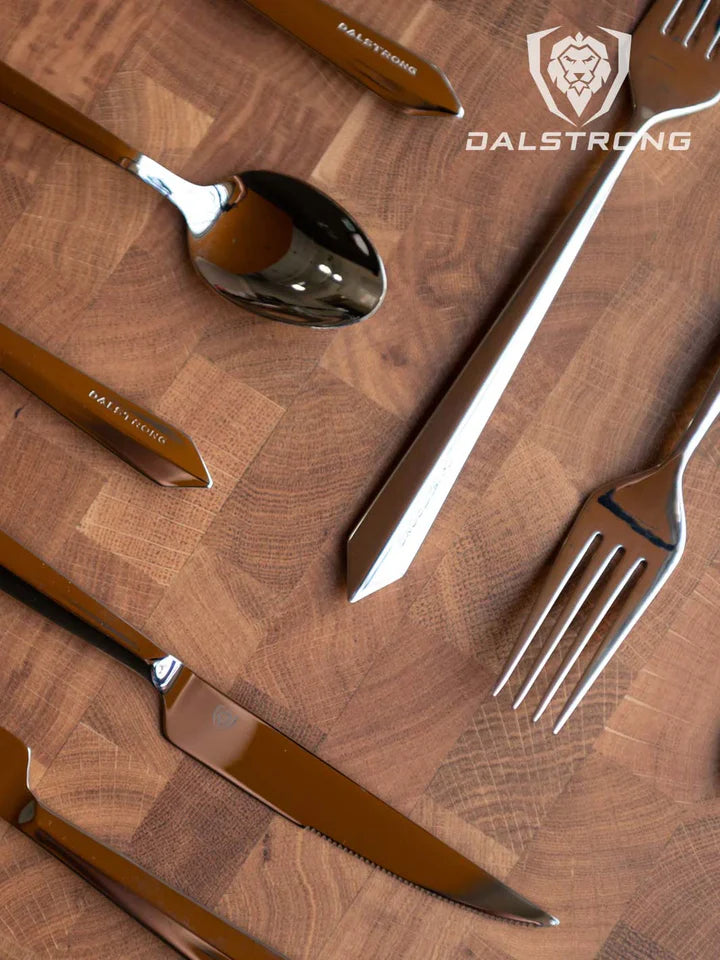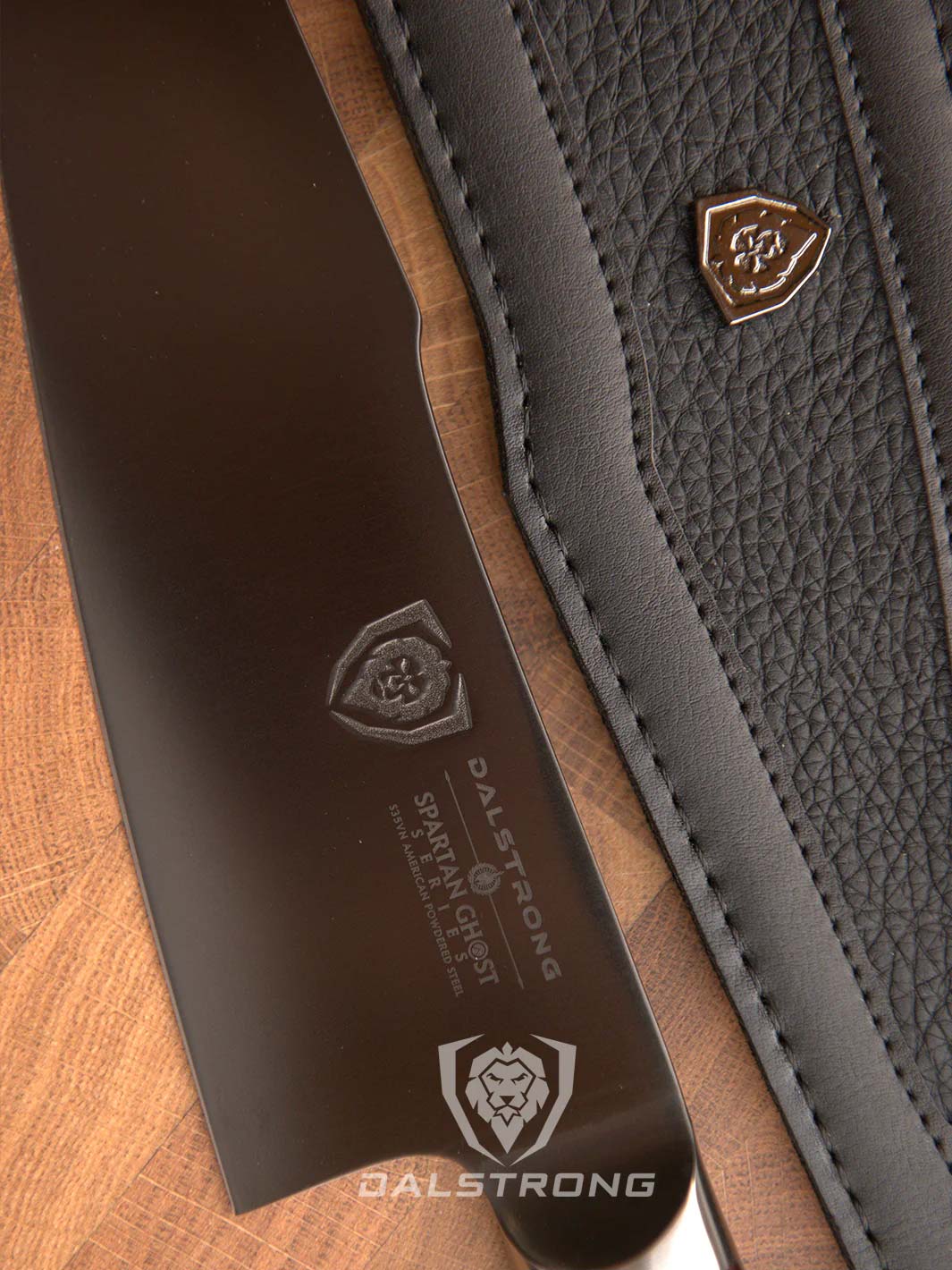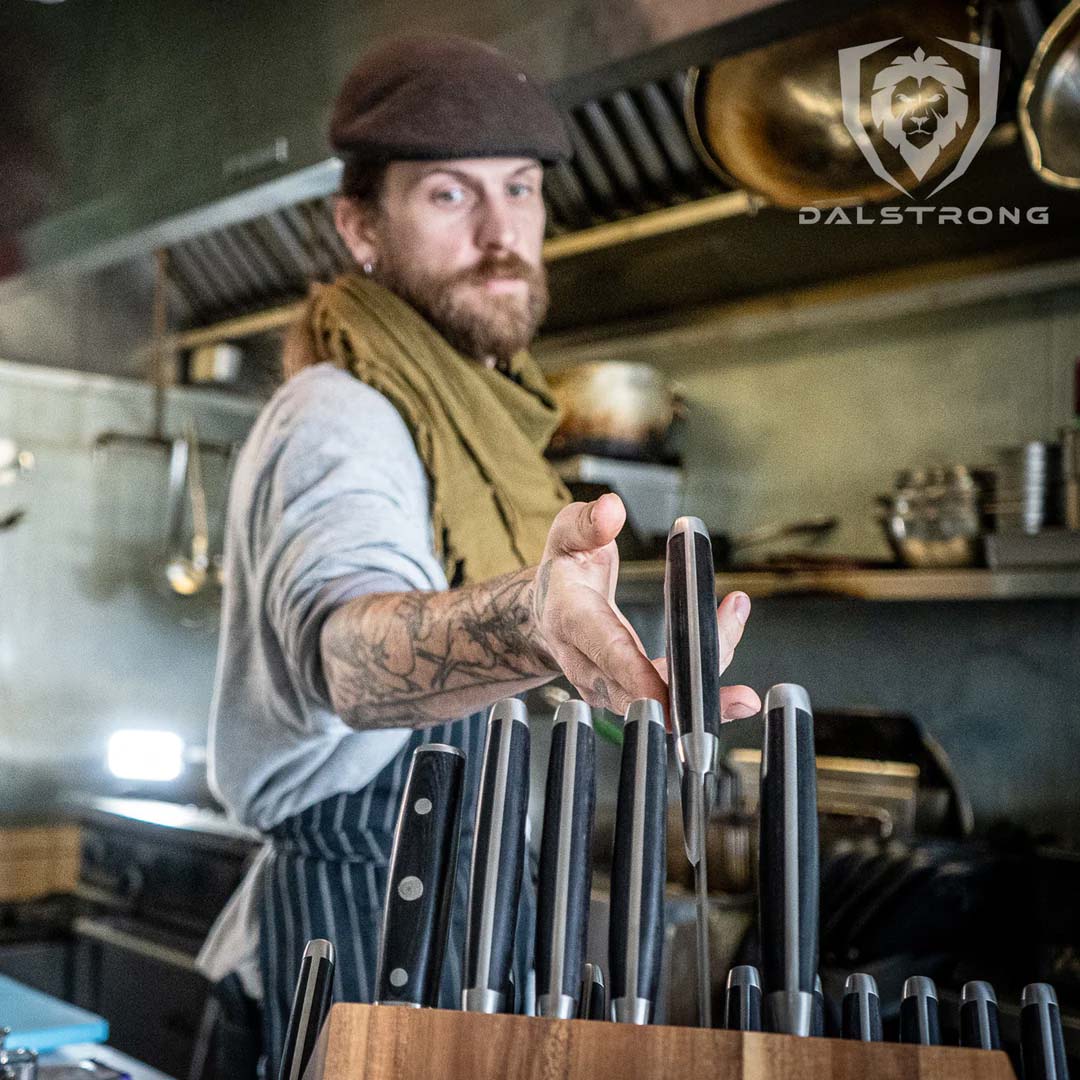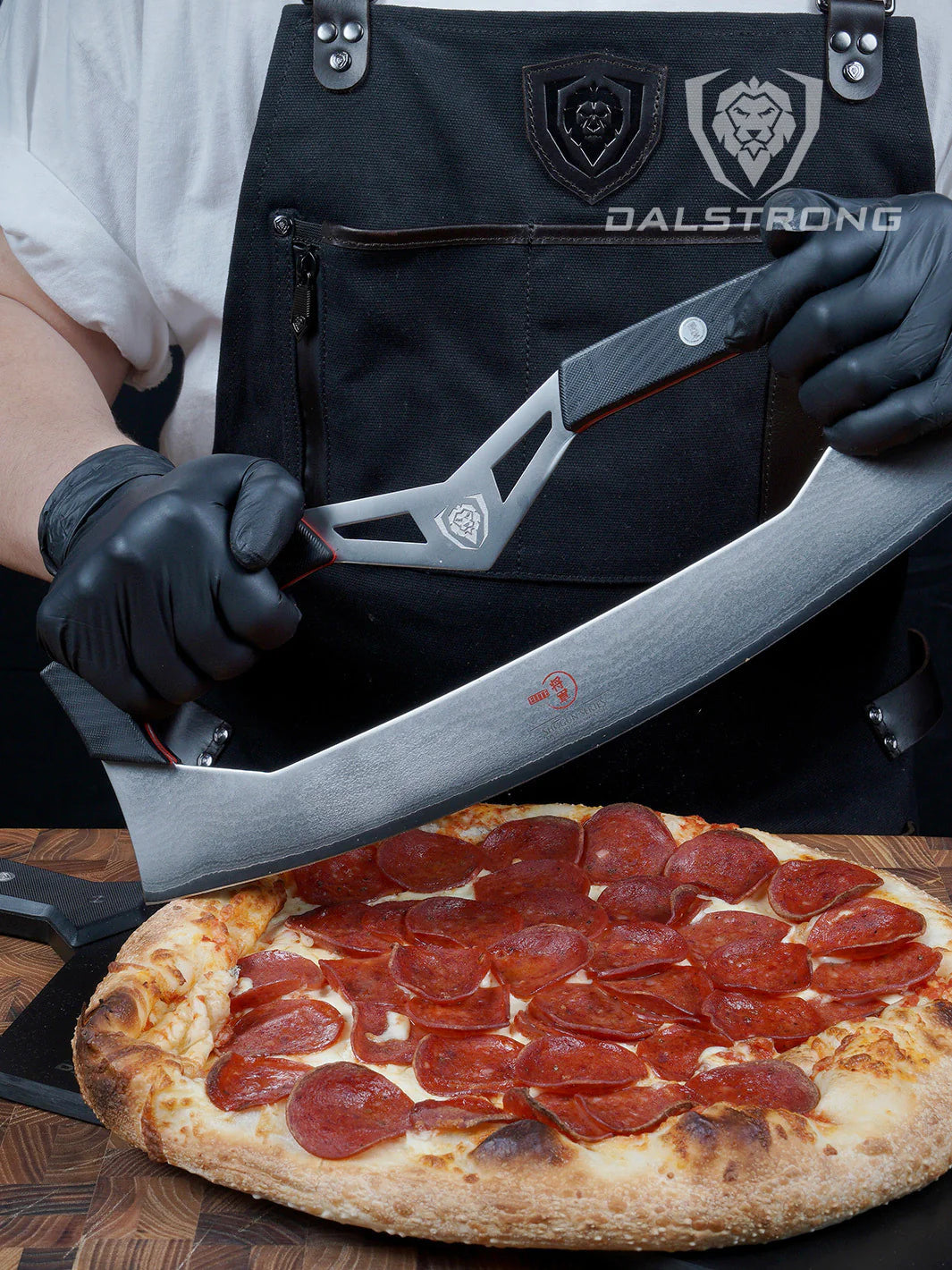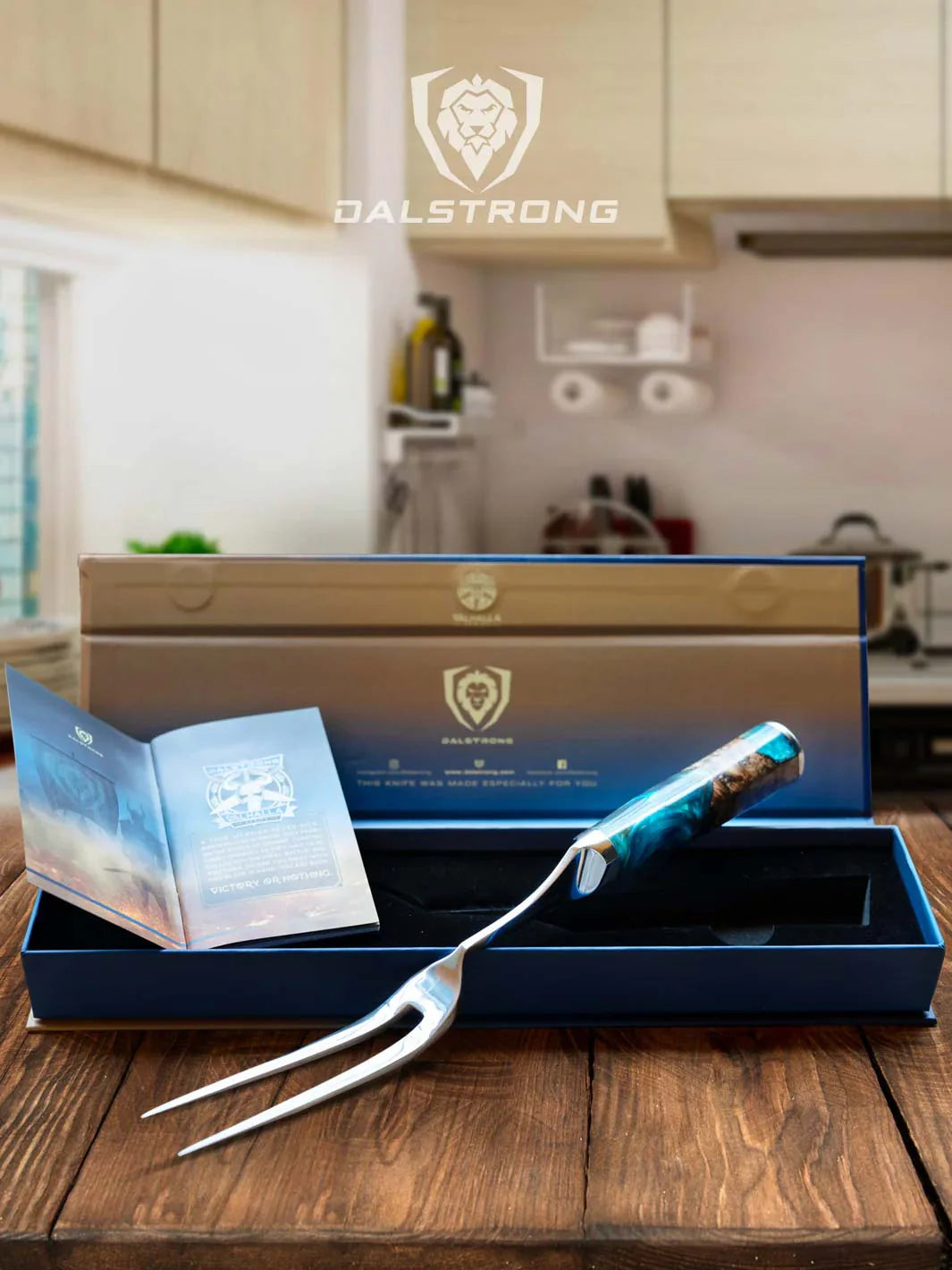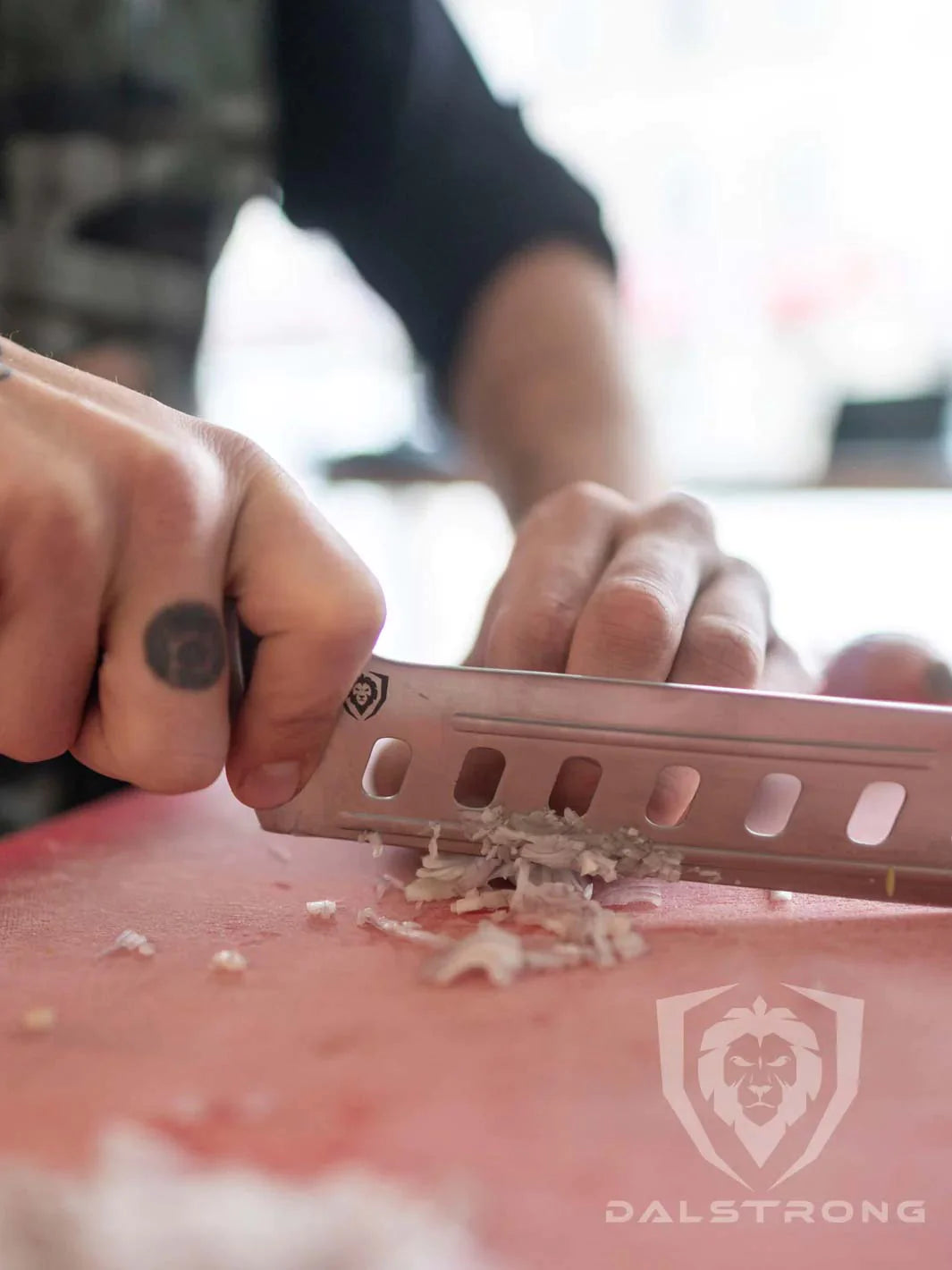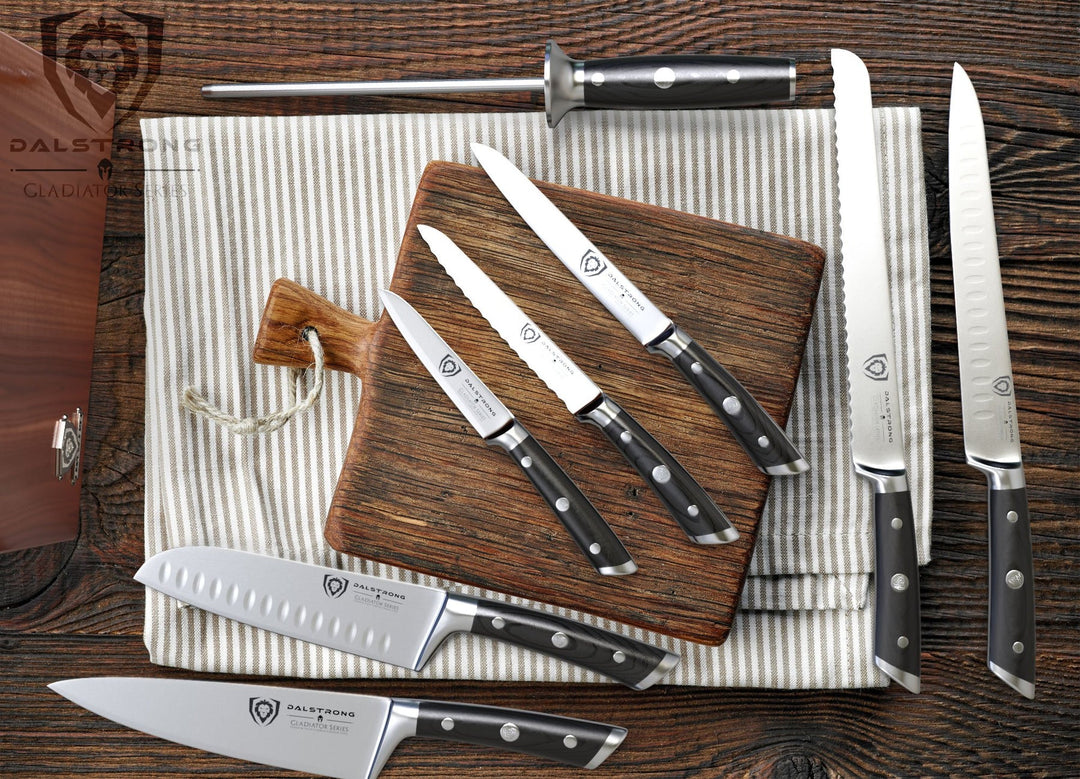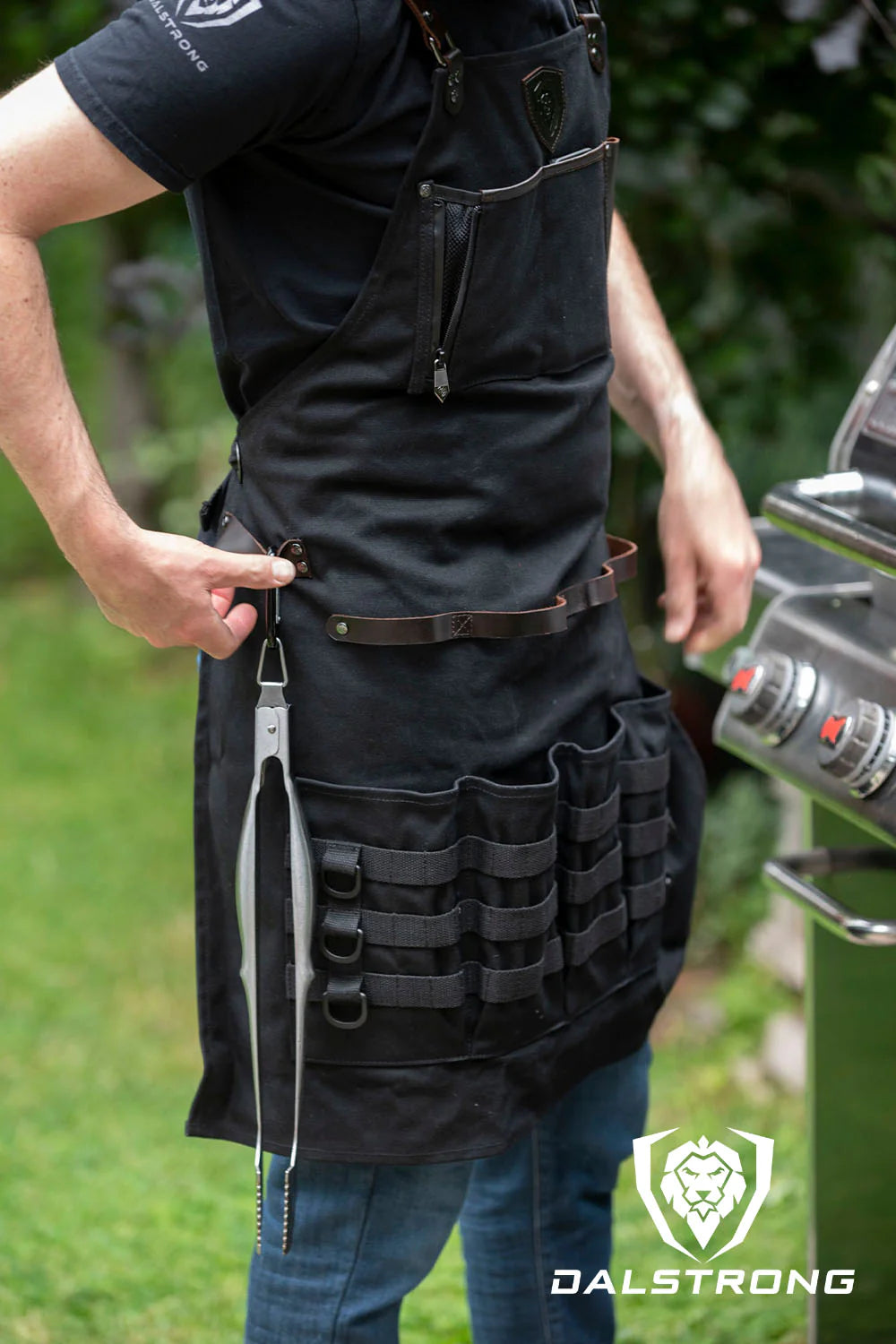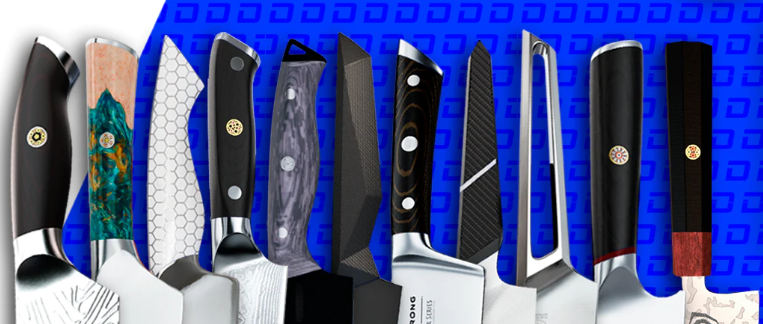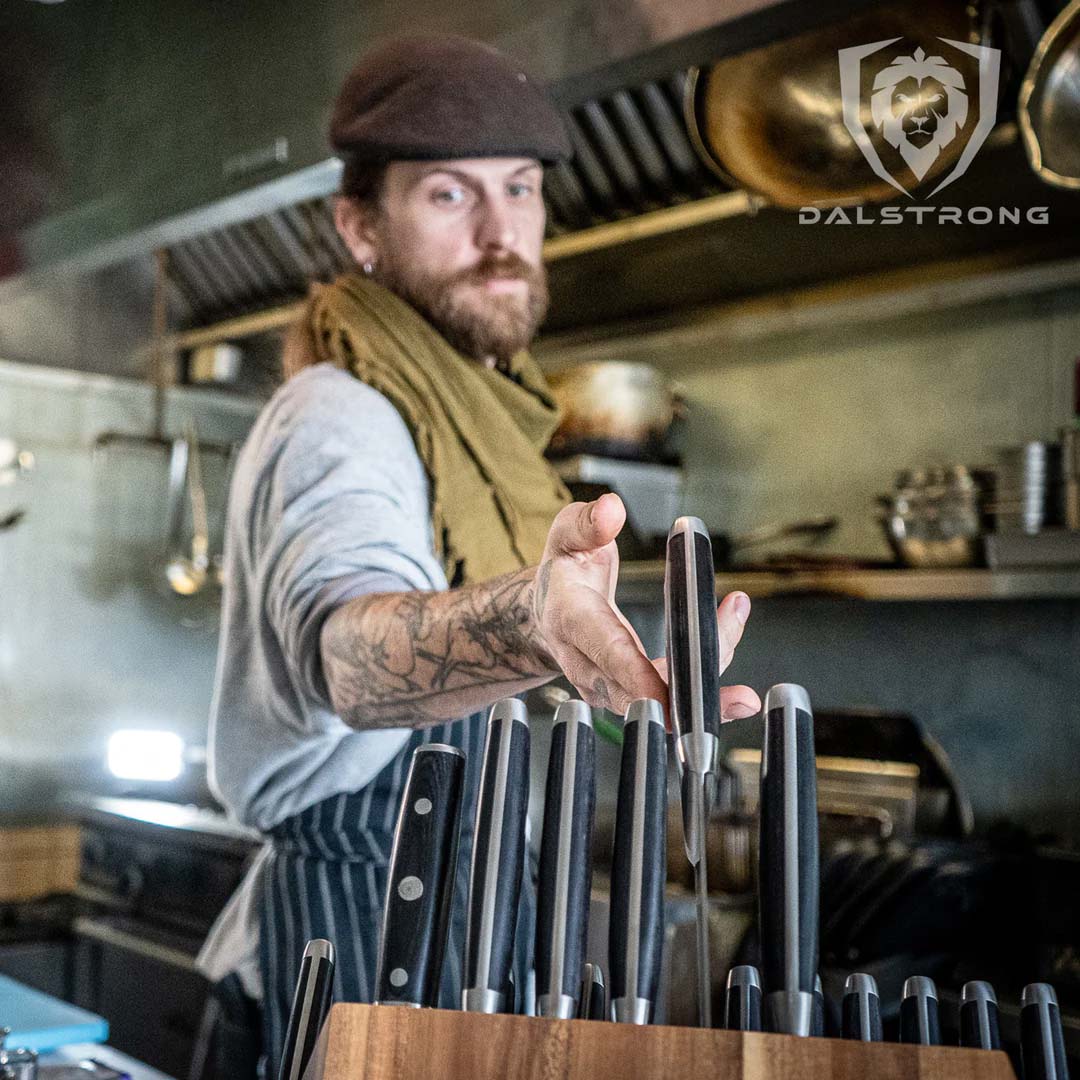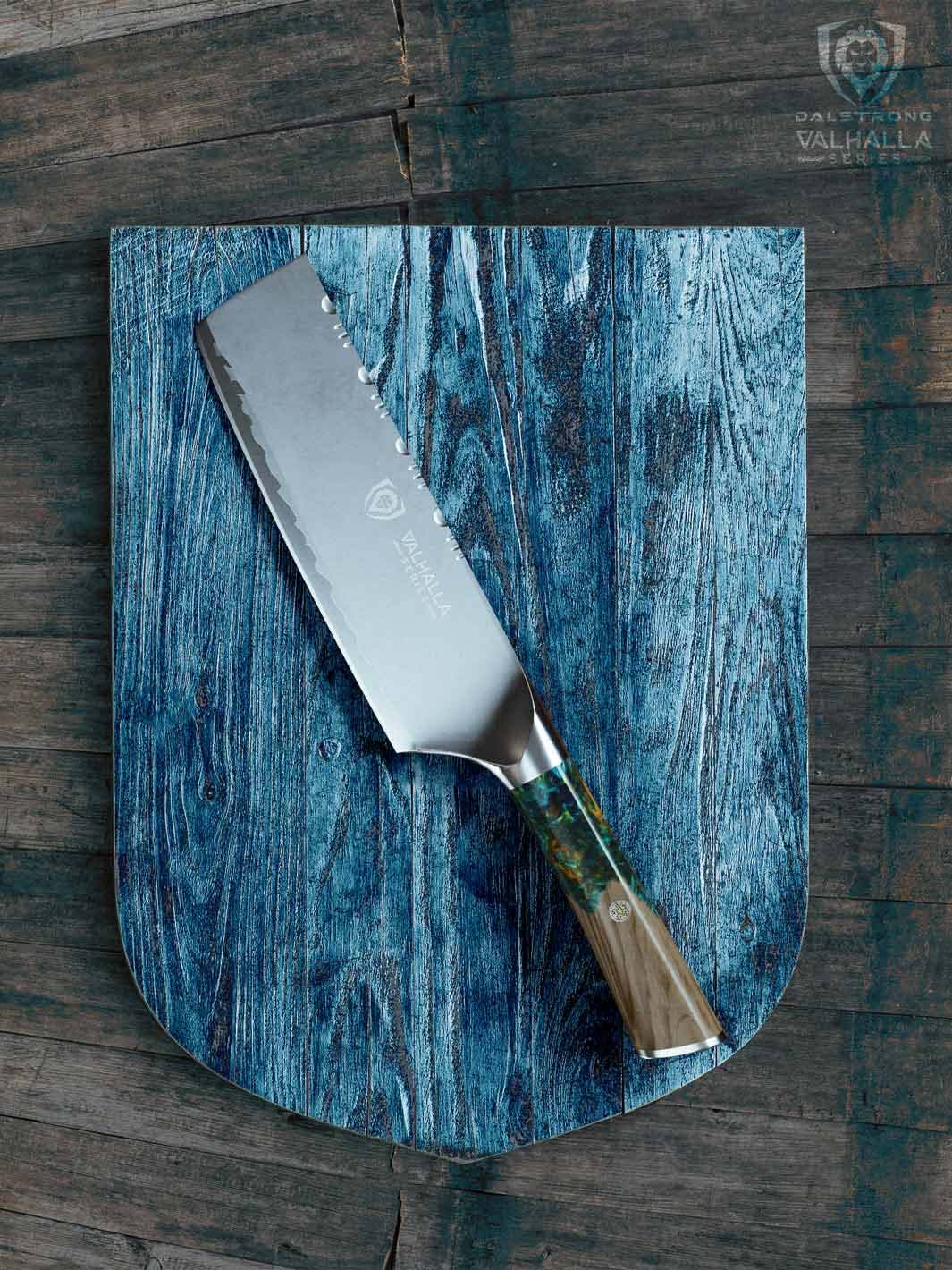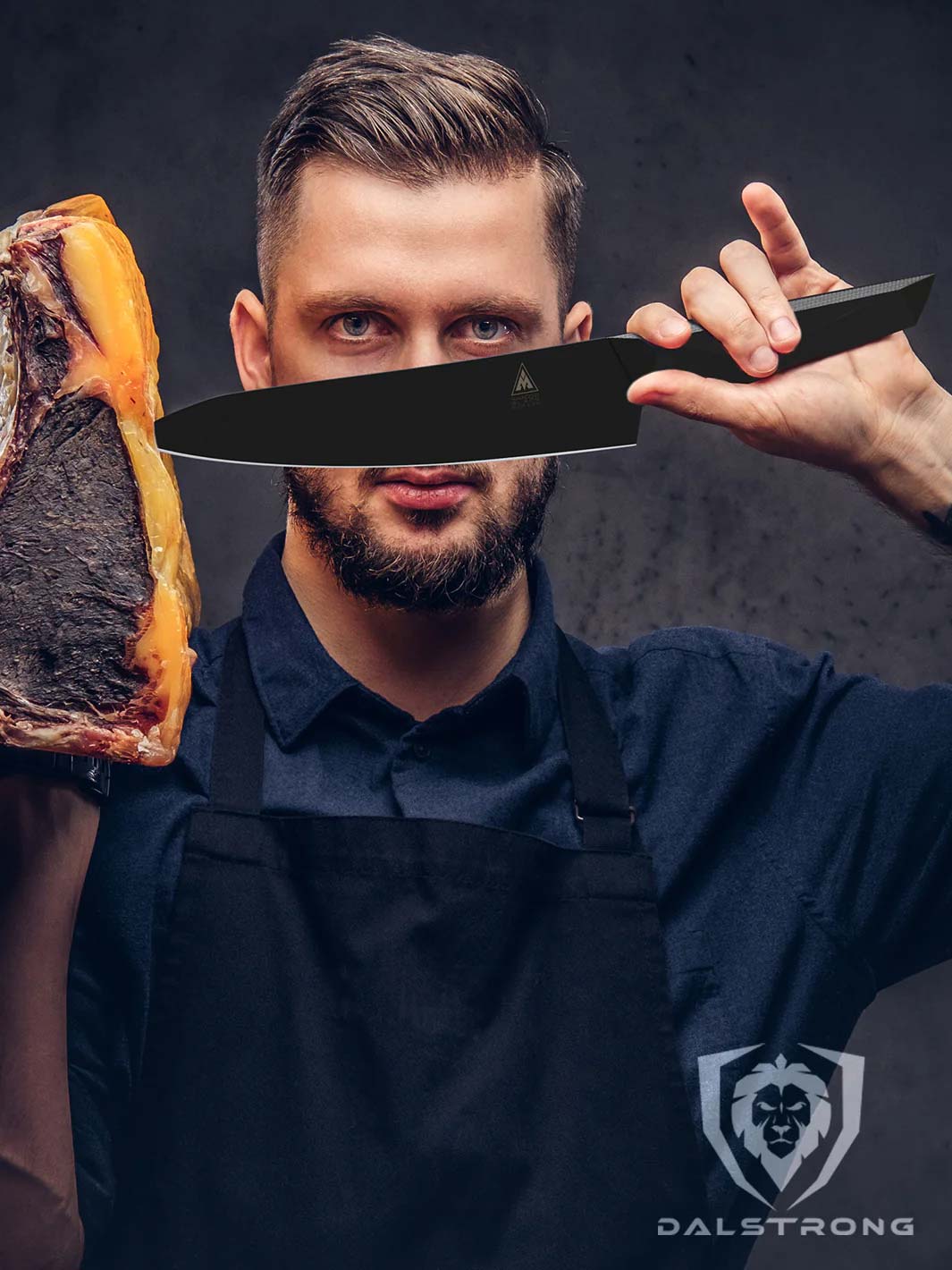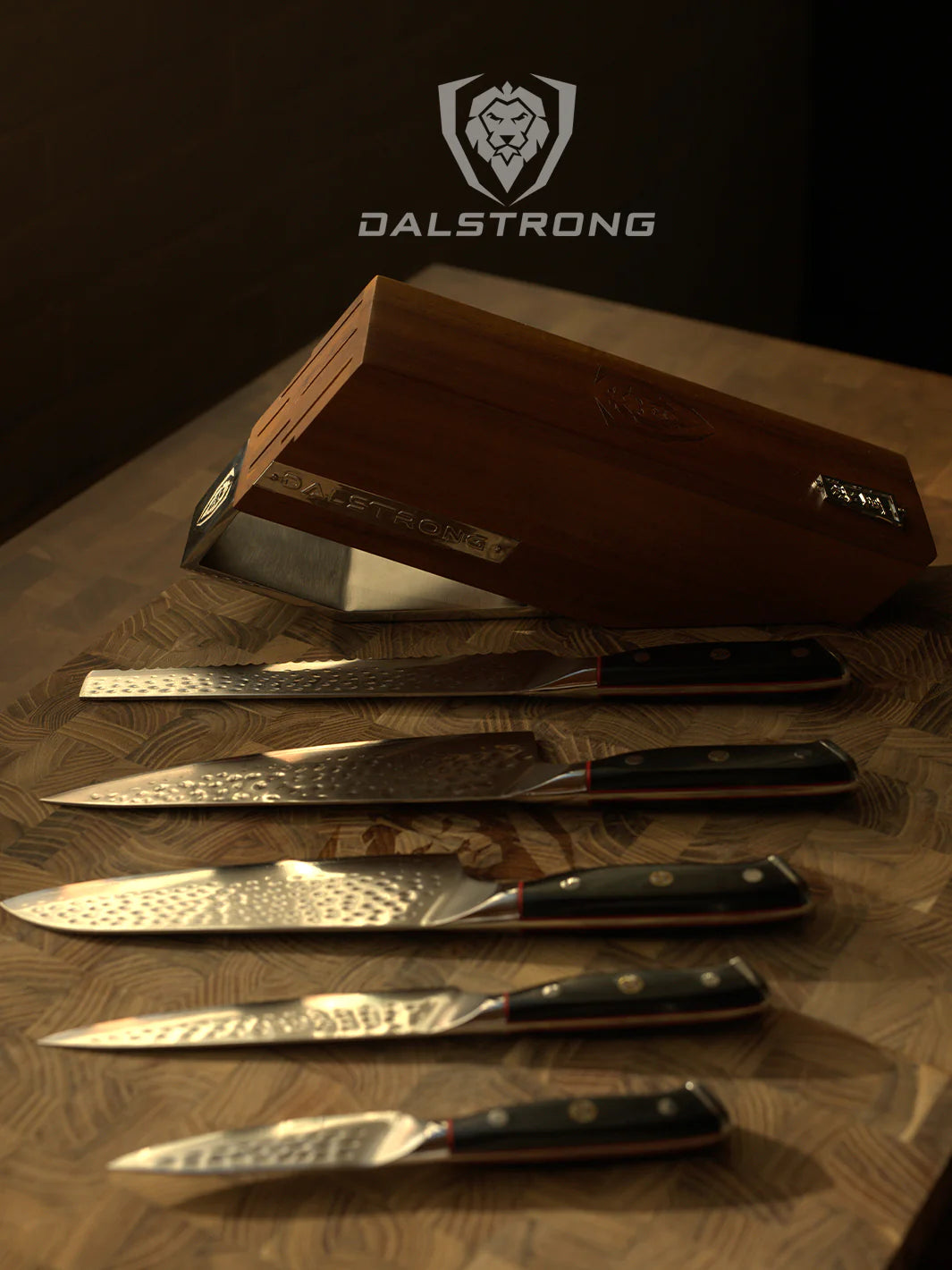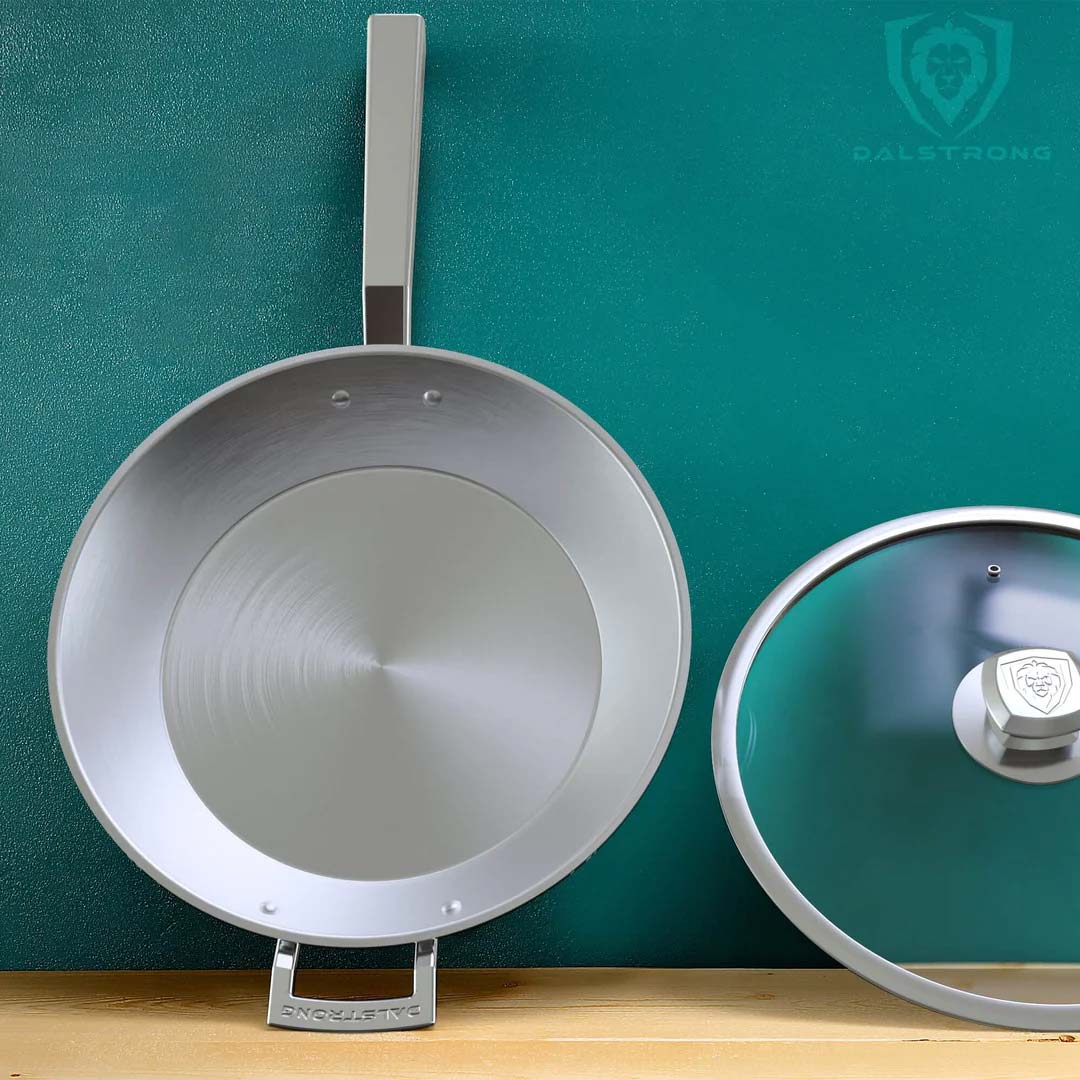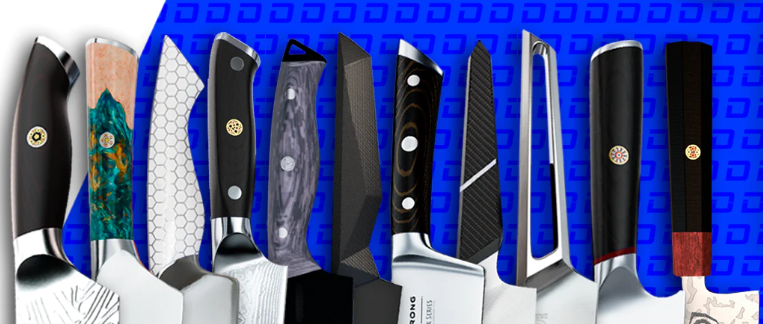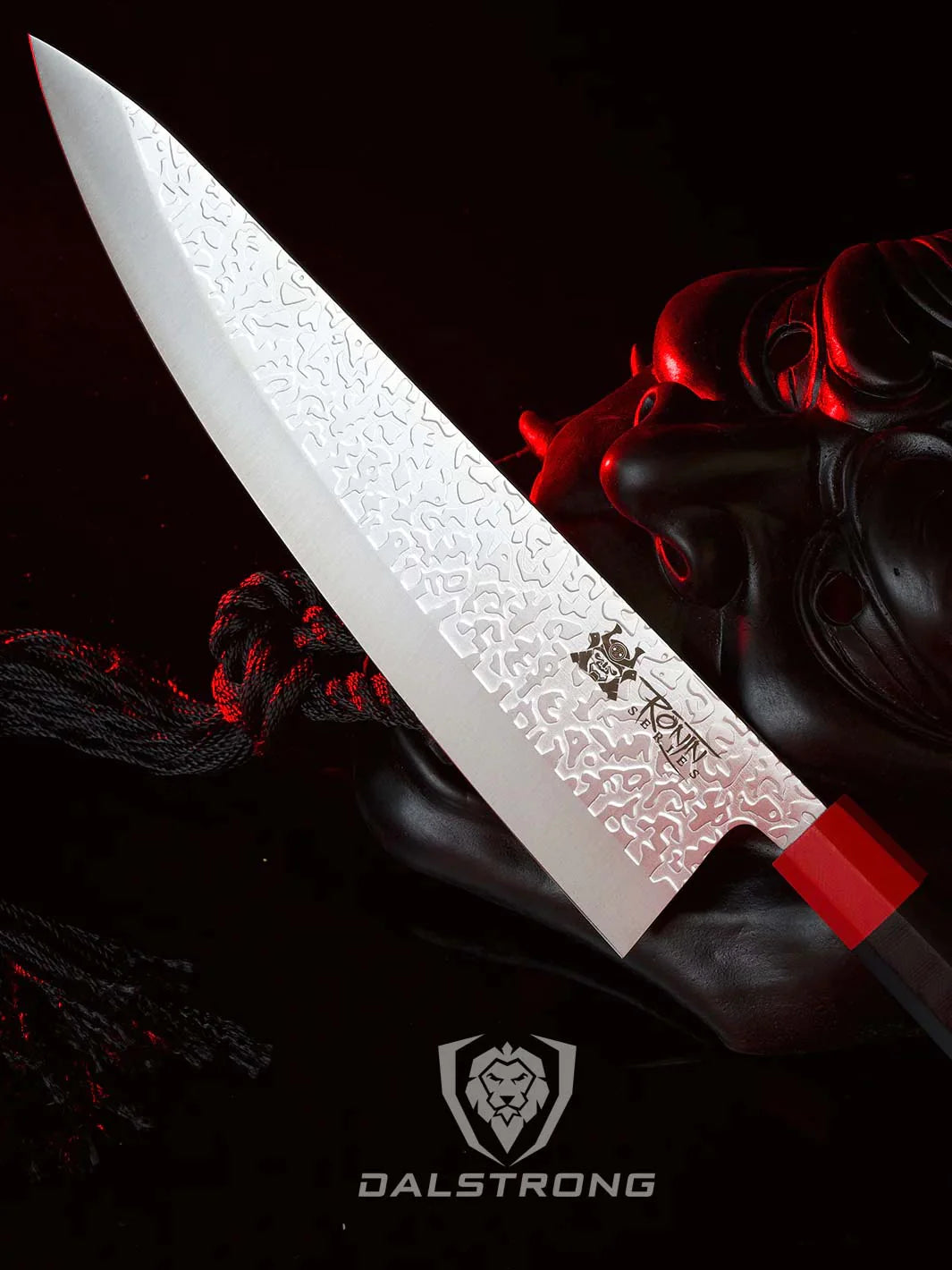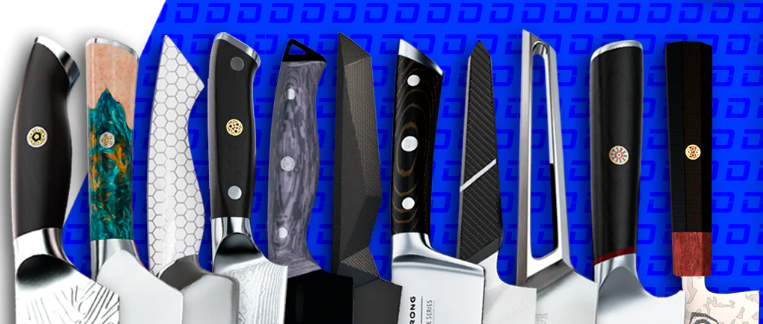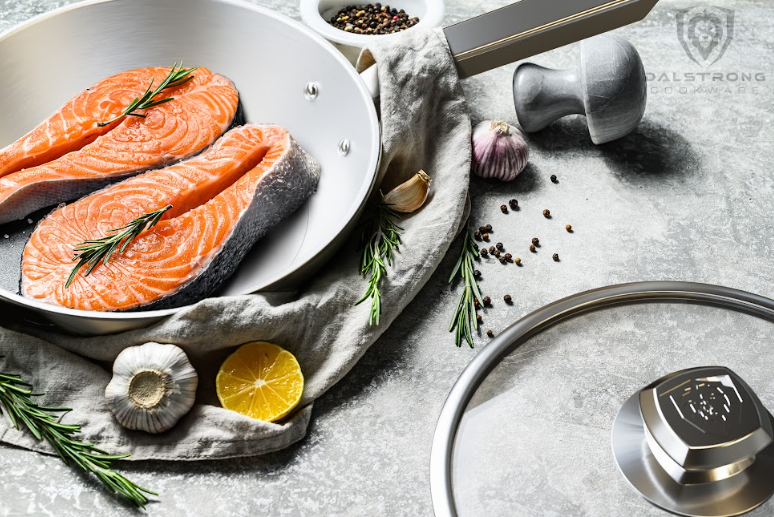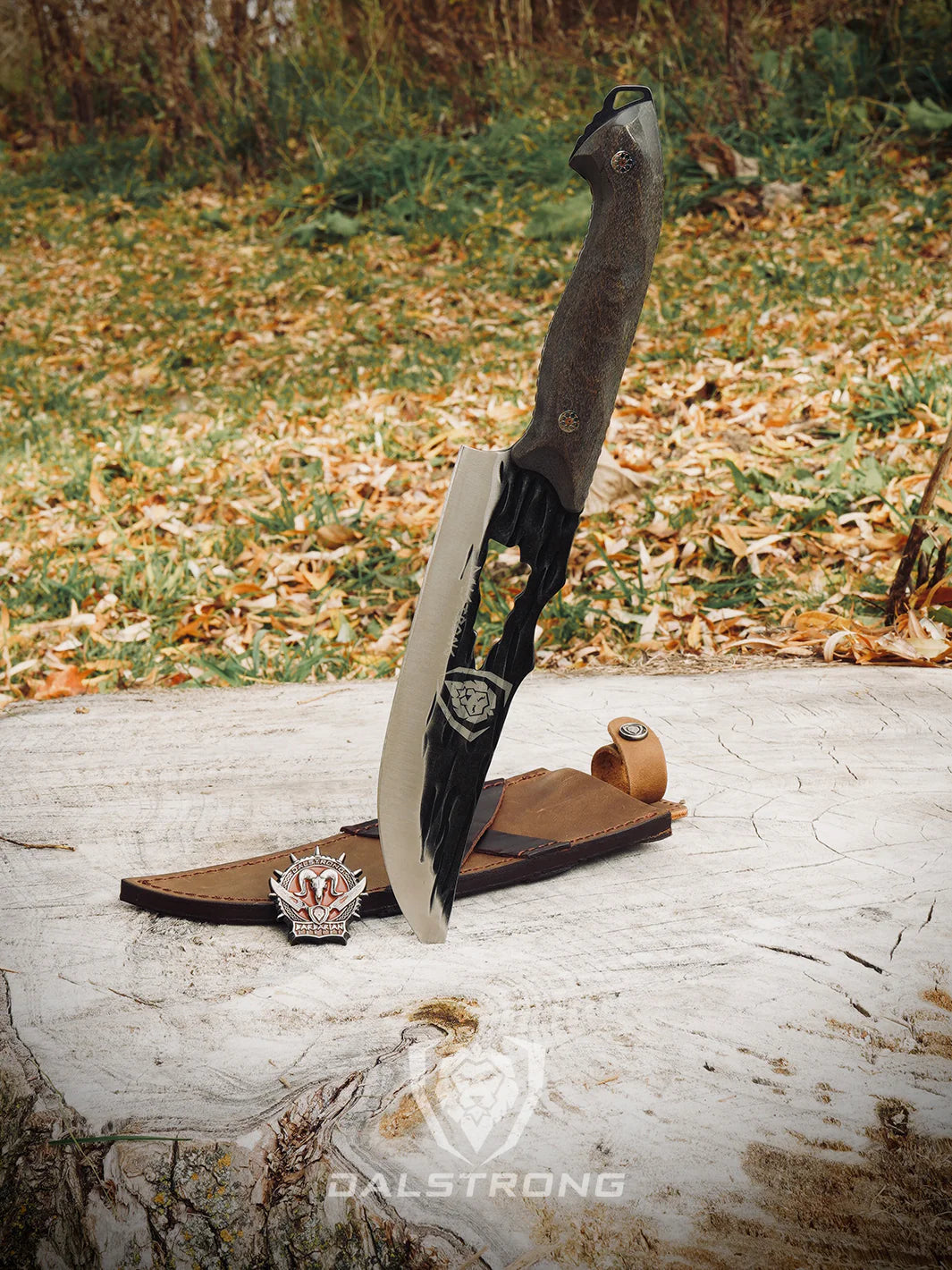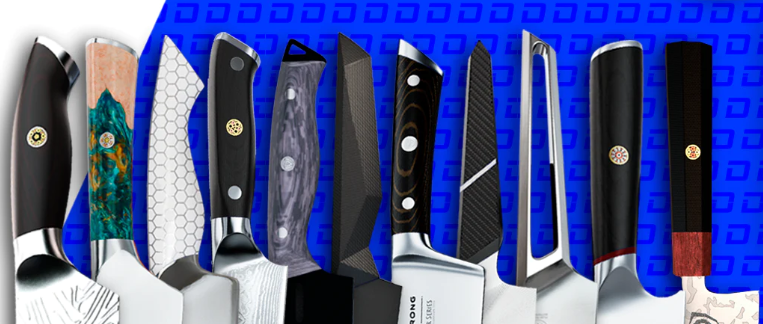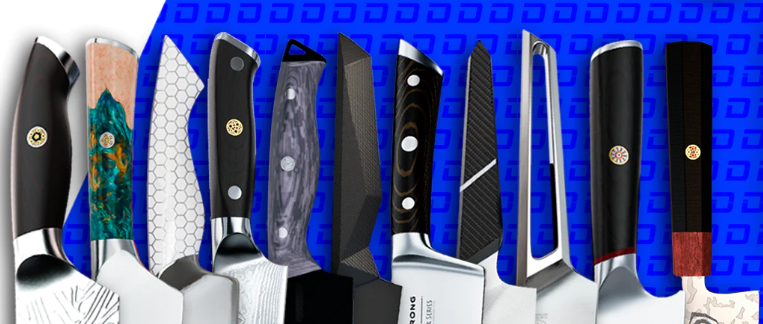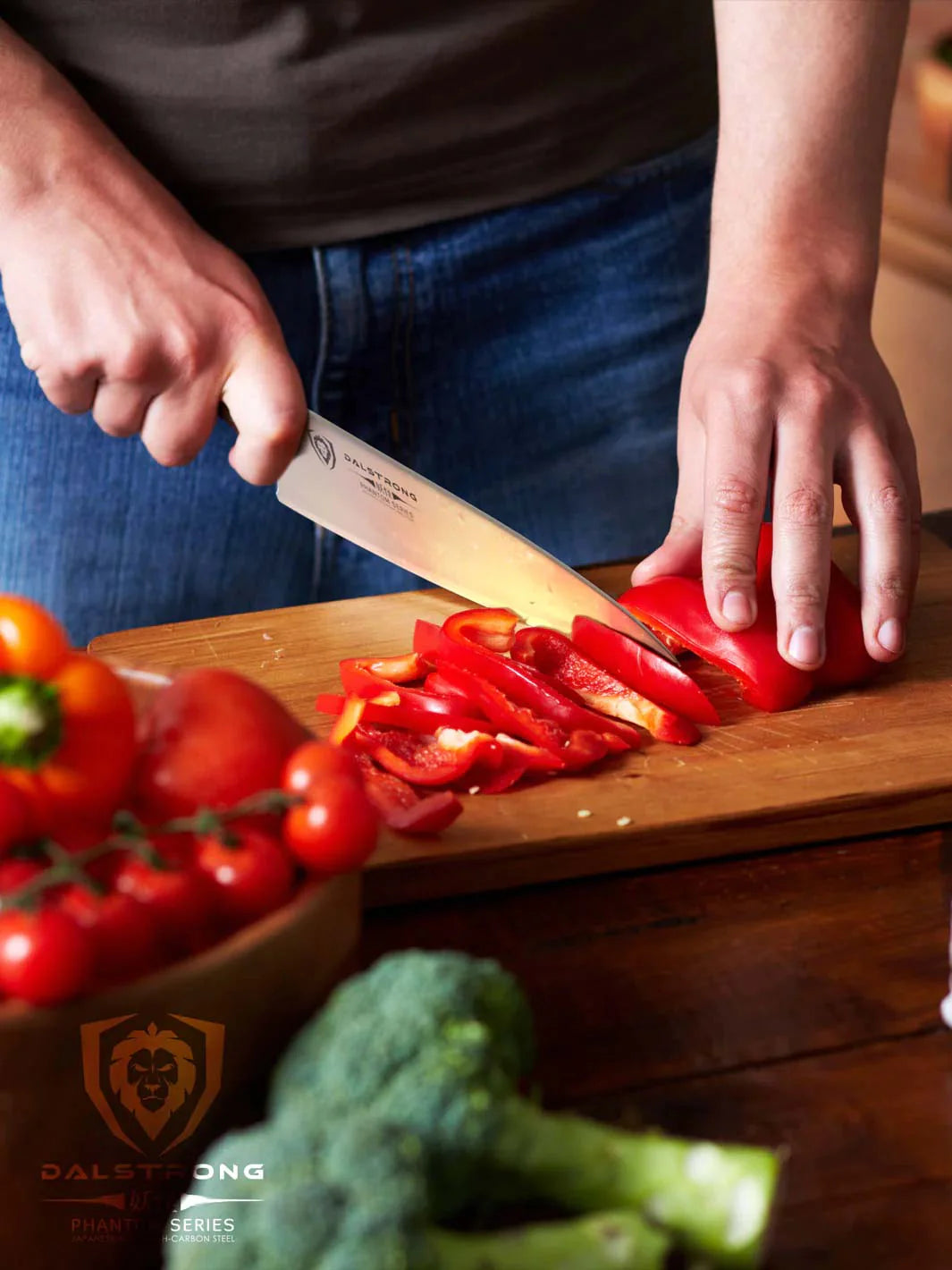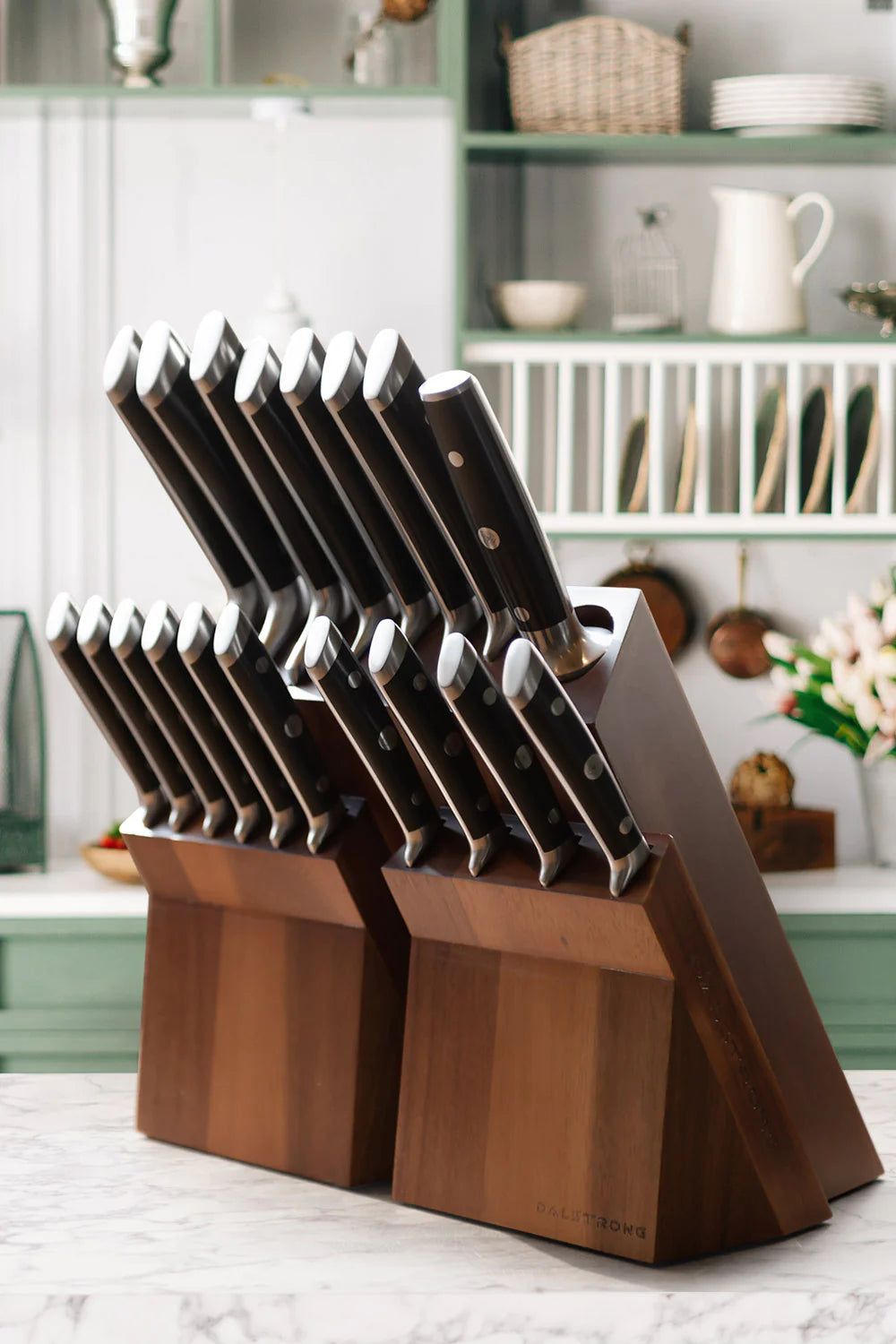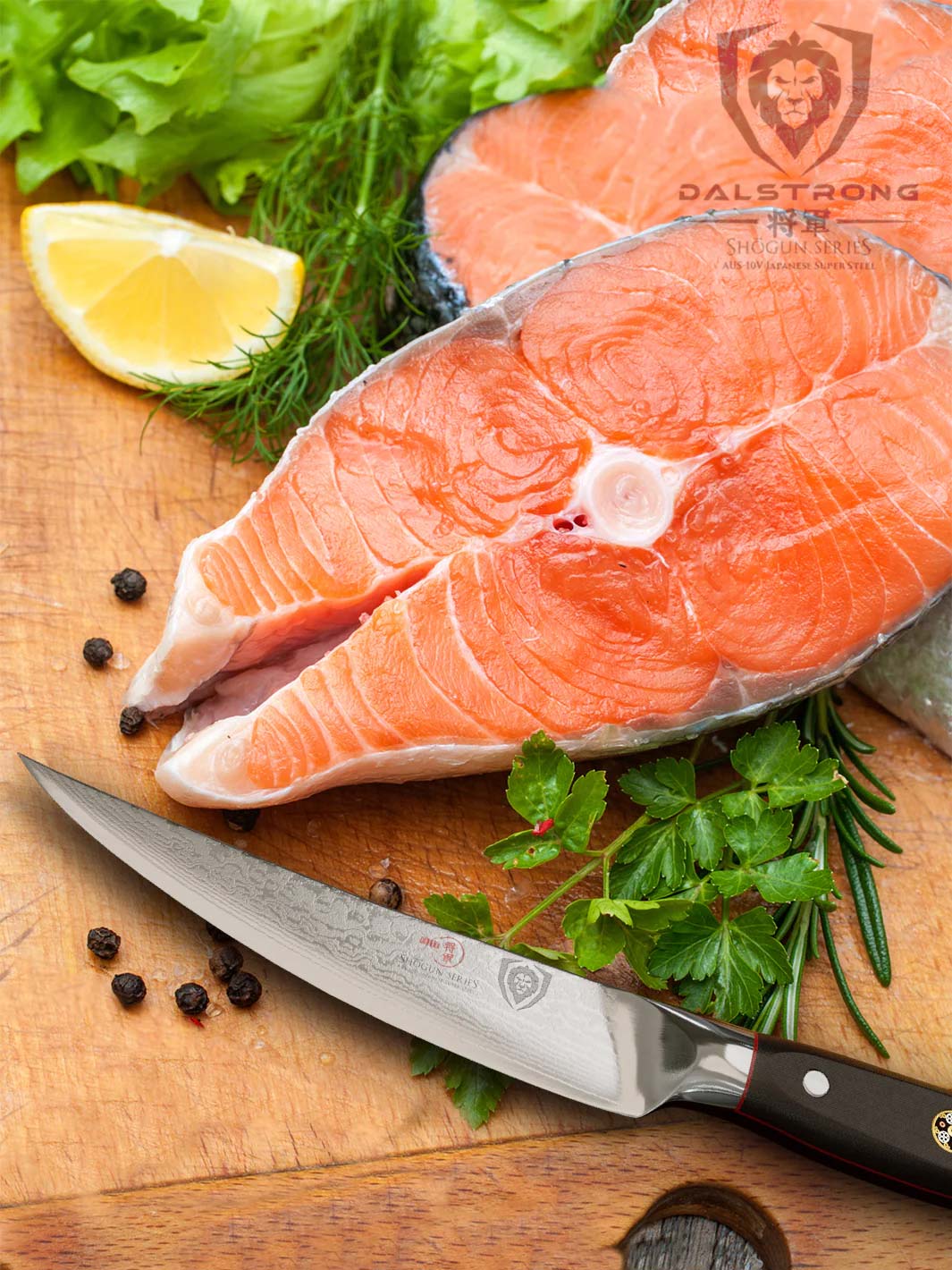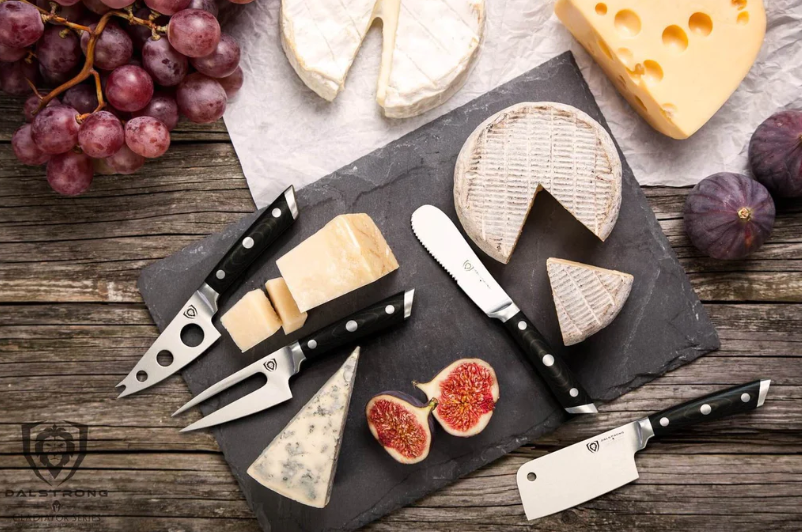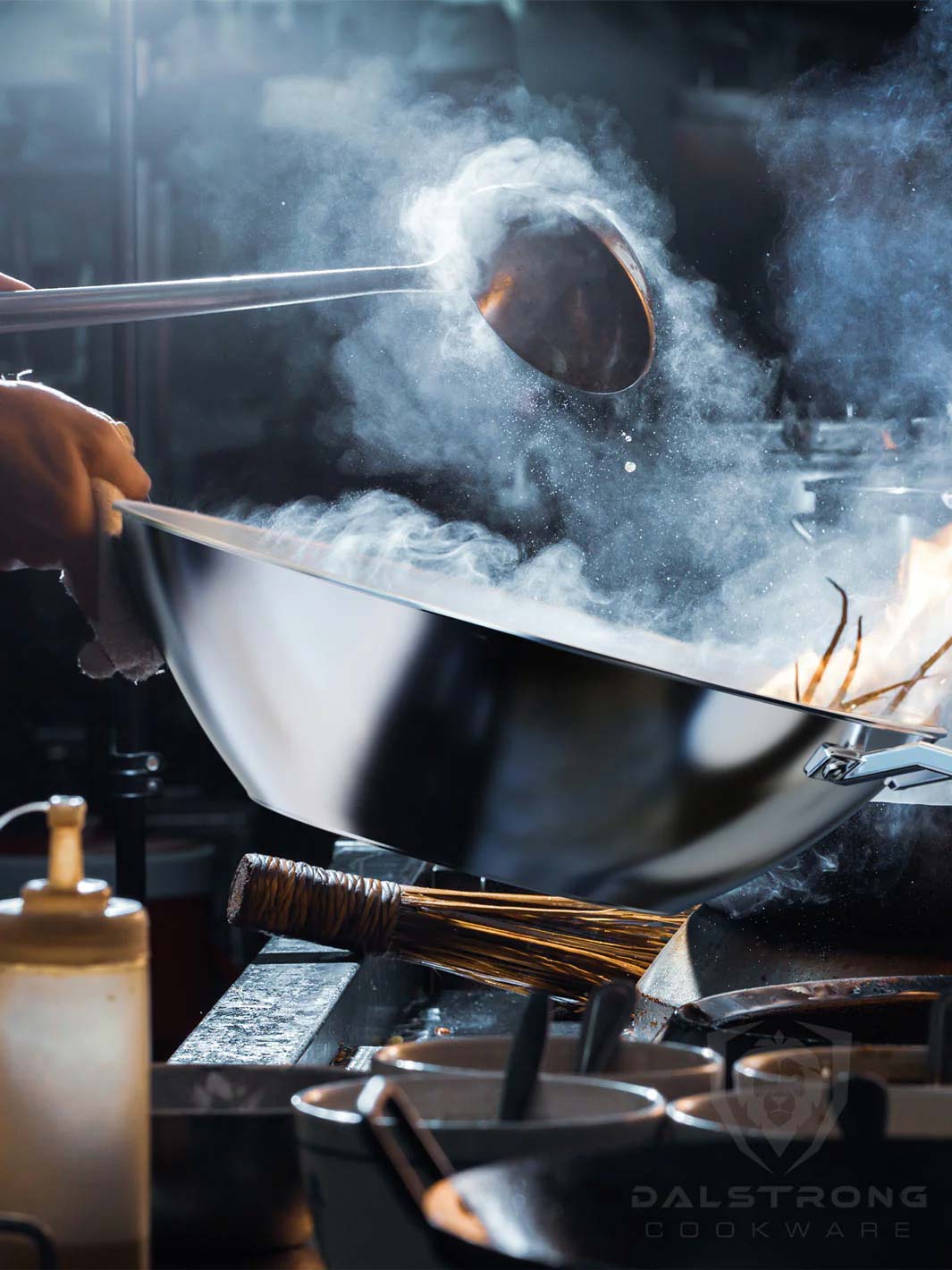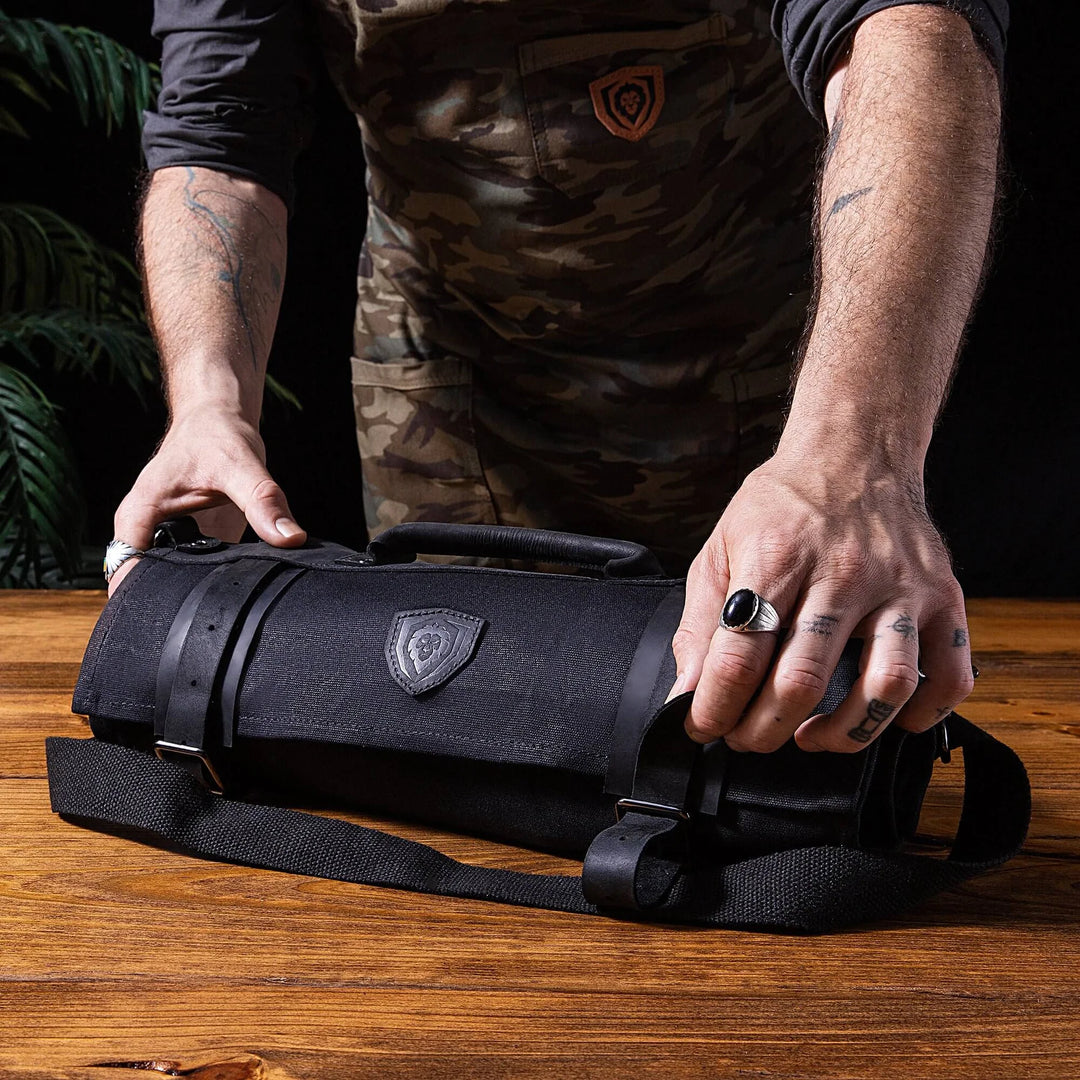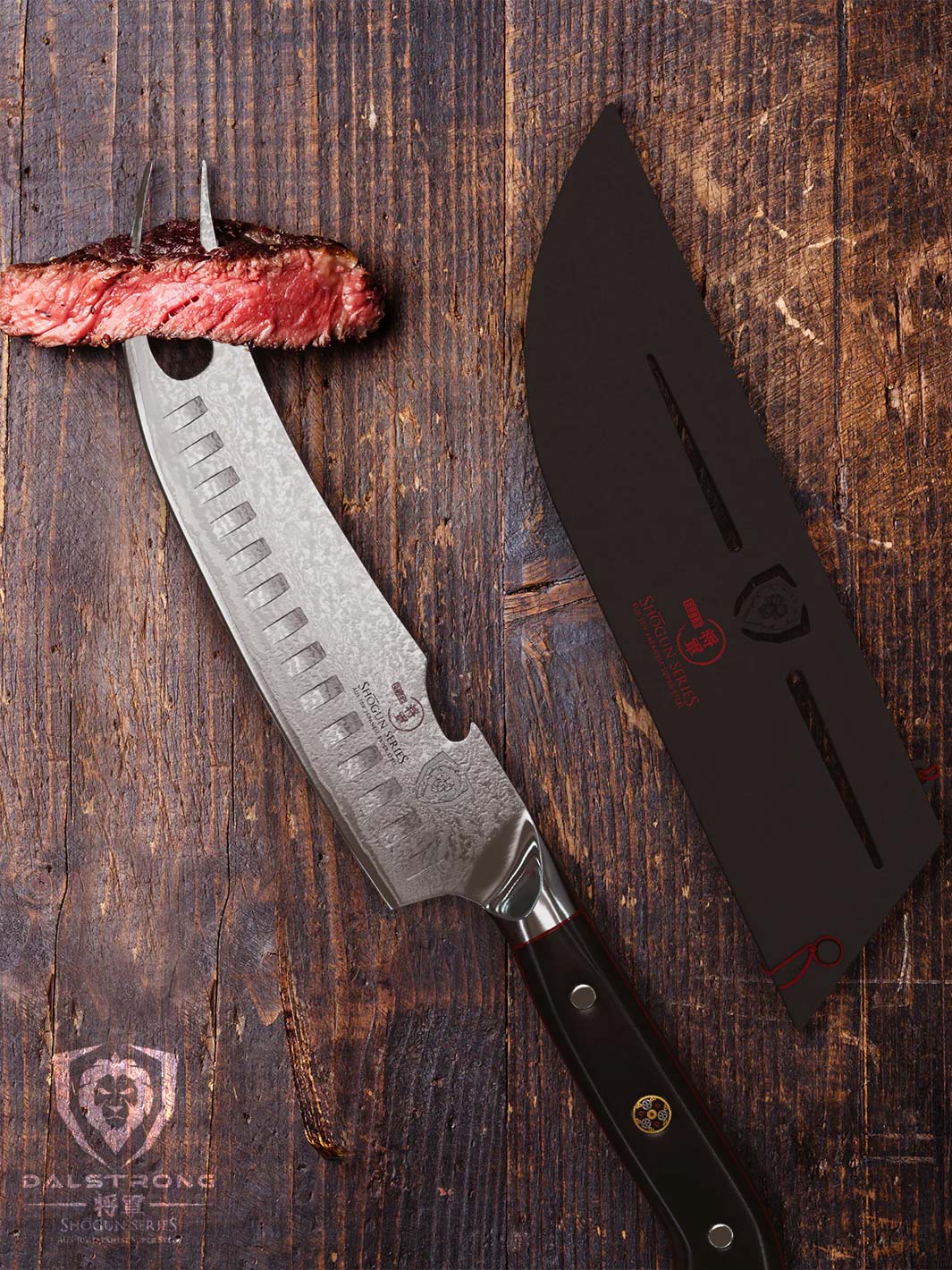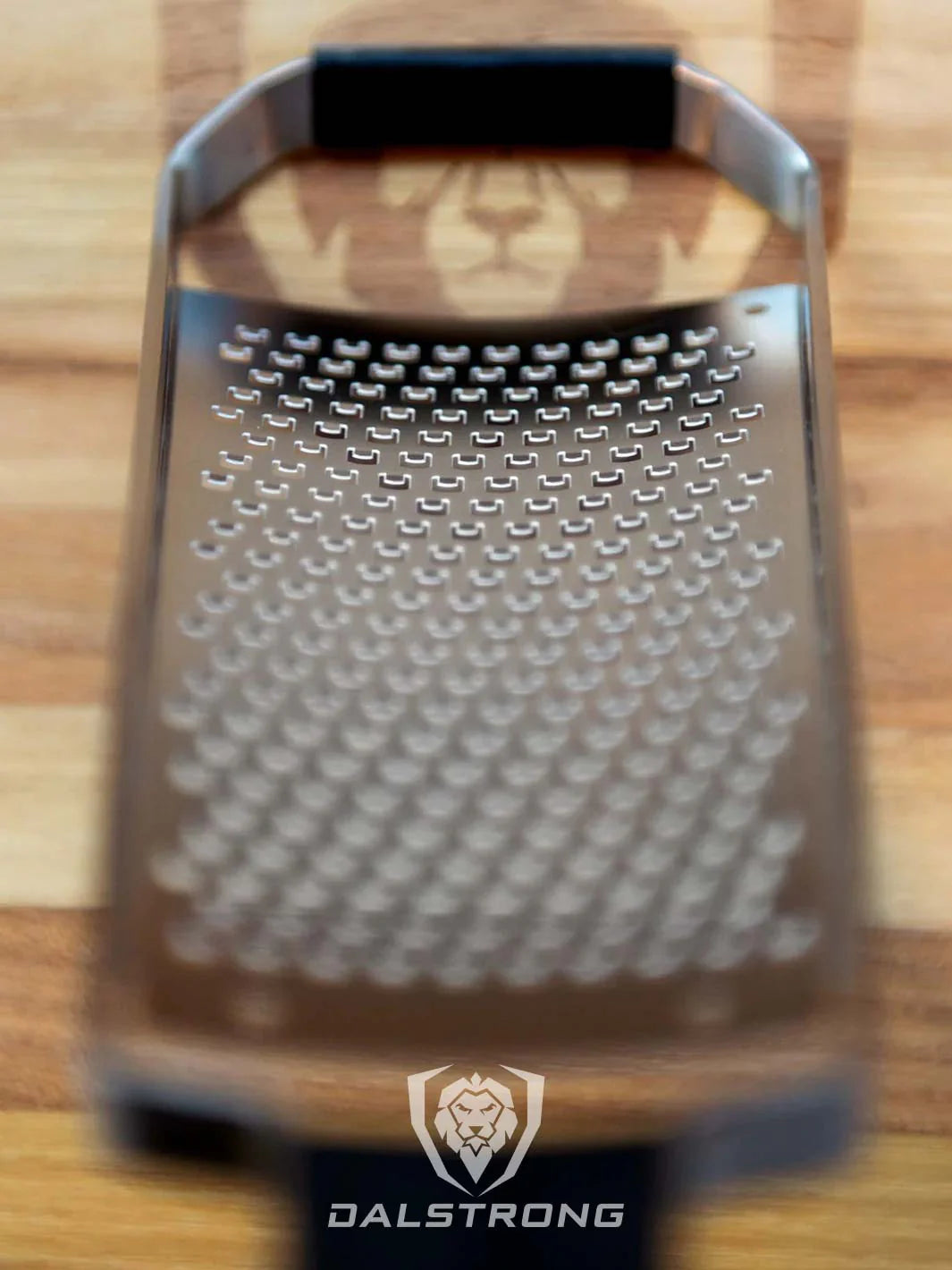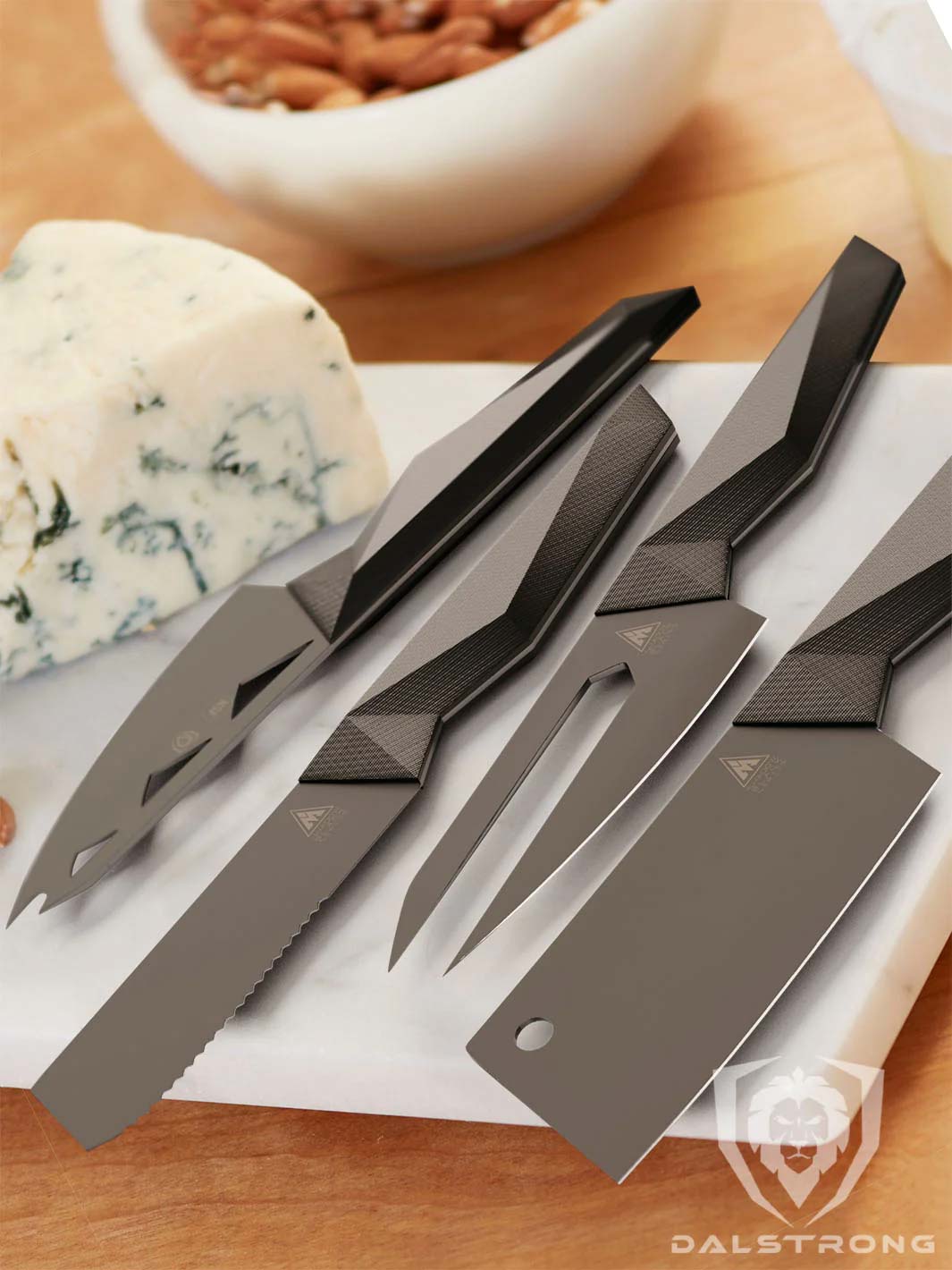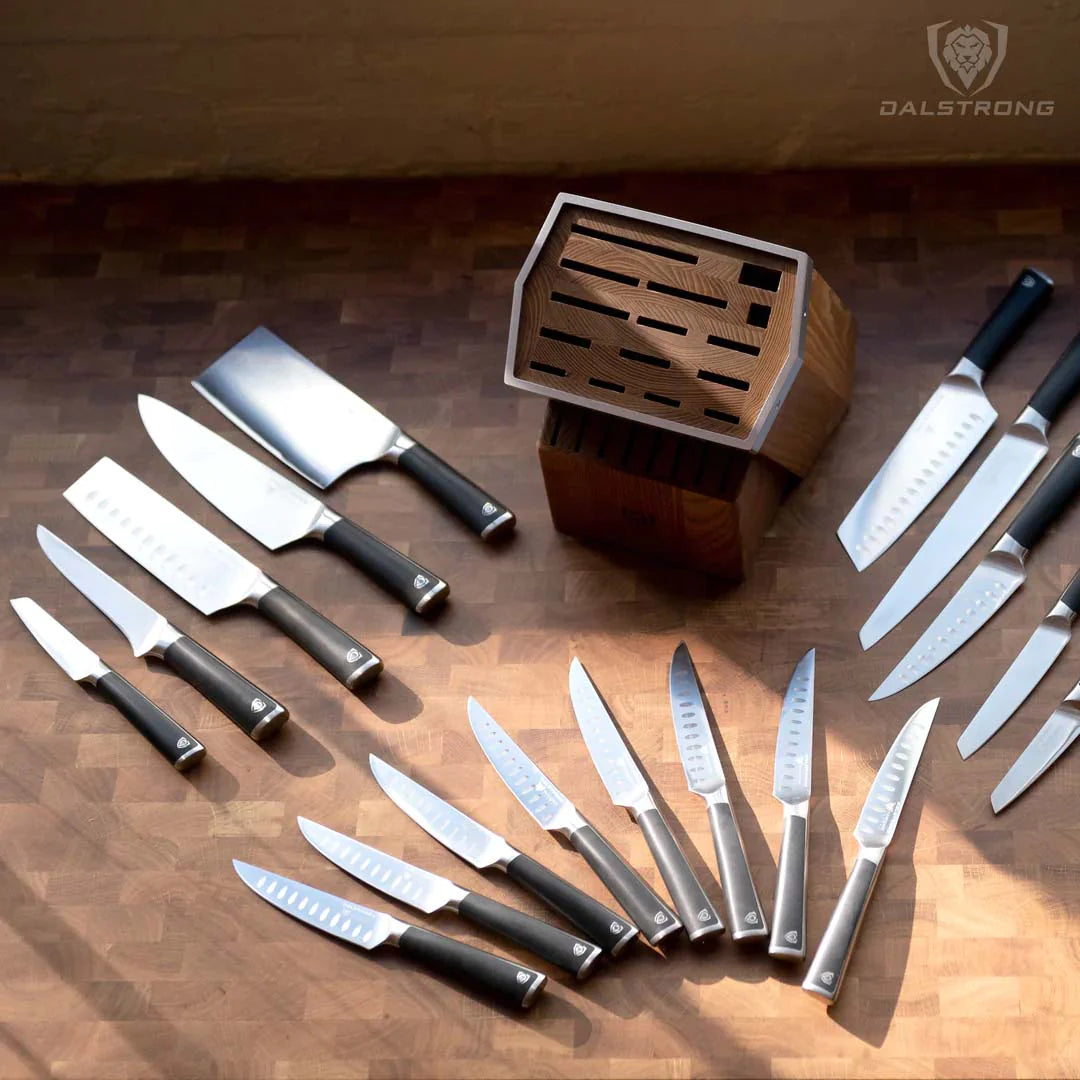What Is A Saute Pan?
12" Sauté Frying Pan | Avalon Series | Dalstrong ©
What Is A Saute Pan?
A saute pan is sort of like a hybrid between a saucepan and a frying pan. Not too deep, not too flat. Let’s get into the nitty gritty of saute pans, what you can use them for, and what to consider while purchasing.
1. Why You Should Know Your Pots & Pans

12" Sauté Frying Pan | Oberon Series | Dalstrong ©
It wasn’t really that long ago that I was perfectly content not really knowing what cooking was all about. Don’t get me wrong, I cooked -- I knew how to put together very basic dishes, which I thought was “probably good enough” -- but I didn’t really think much about it beyond the basics.
For me, cookware was just not really an important thing to take into consideration. It just existed, and it was always available to me, and it really made very little difference whether I used one or the other. After all, cooking is essentially just putting things close to heat, right?
Why get fancy about cookware? What difference does it make whether a pan has a lid that is shaped a certain way, or walls that are angled in certain directions? That just seemed like silly nitpicking to me.
Of course, part of growing up is realizing that just because something seems silly and frivolous to you from a distance doesn’t mean it’s actually silly and frivolous. More likely, you just never took the time to learn about it, or figure out how that “silly and frivolous” knowledge could actually make your own life better.
I think this is the case for many kitchen novices. The process of discovering your inner kitchen connoisseur is a gradual one, paved by dozens of tiny little epiphanies about things you were only vaguely aware of, and followed by long periods of feeling remarkably silly for waiting so long to look more deeply into it.
That’s how I came to learn that there was more than one type of pan than “frying pan.” That there was more to a pot than “the thing where you cook the watery foods.” And that knowing when to use certain cookware would greatly improve my quality of life through a more enjoyable cooking process and more delicious meals.
Today, we’re going to talk about a type of pan that you have definitely heard of, and it may even be a type of pan that you currently have in your kitchen. But is it a pan you’re using to its best potential? Is it a pan that you’re deploying on the right dishes? Does it occupy the space in your life that it should?
Okay, before I start getting all Marie Kondo on you, maybe we should just jump straight into it. Today we’re going to be talking about the noble saute pan.
2. What Is A Saute Pan?

12" Sauté Frying Pan | Avalon Series | Dalstrong ©
A saute pan is a nifty piece of cookware that’s sort of like a hybrid between a saucepan and a frying pan. Not too deep, not too flat. It’s in the “Goldilocks zone” of sautéing and searing thanks to its wider base, which aids in heat distribution throughout. It also comes with a lid.
You’ll find them to be more versatile than either of its two cousins, and better suited for a number of kitchen tasks you’d be silly to attempt with either a saucepan or a frying pan.
On the odd chance that you don’t currently own a saute pan… you should get on that ASAP. A saute pan is one of the most important pieces of cookware, useful for a wide variety of dishes and techniques. You could use it in the oven, for instance, for shallow frying or even baking (for this reason it’s recommended that you find a saute pan that is oven safe… more on that in a bit).
Surface area
A saute pan has straight sides, which is great when it comes to its cooking surface; meanwhile, you’ll find that a skillet loses at least an inch on each side due to the shape of its sides. The difference in cooking area is usually around 30% for skillets and saute pans of the same size, which is not a small number! When you’re making large meals, that 30% is going to be a lifesaver.
Weight
A saute pan will also be considerably heavier than a skillet of a similar size. This is due to its wide base. It also means that they often come with a “helper handle” on the opposite side of the main handle, to help you lift and move it around. For this reason, you might prefer a skillet over a saute pan when it comes to shaking and stirring; you want to keep your food evenly cooked throughout.
Volume
How much can a saute pan fit? This is another area where its straight sides come in handy. Since there’s no gradual leveling of the sides, you’ll find that you can put a higher amount of liquid in the same amount of space. This is going to be really helpful when braising or shallow-frying foods in liquids, also when making a pan sauce. The straight sides also means there’ll be less splashing out as you move the saute pan around.
3. What To Look For When Shopping For A Saute Pan

So we’ve established what a sauté pan is. Hopefully, by listing out all the useful things you can do with them, you’re primed to go out and find the saute pan of your dreams. But…what should you look for?
Worry not, young padawan, I am here to guide you through the process of cookware selection. In fact, I may even have specific recommendations of saute pans you can buy. But let’s not get ahead of ourselves -- that happens in the next section down.
When looking for a saute pan, be on the lookout for:
Materials
You’re going to find all kinds of stuff, including cast iron pans and carbon steel saute pans. You’ll want to look for triple-layer construction. This term refers to a layer of hard anodized aluminum that is clad between two layers of stainless steel.
The reason this is important -- and so far we’ve only really been talking about the shape of the pan, so take notes here -- is that hard anodized aluminum and stainless steel need to work together to achieve the optimum heating.
You see, aluminum transmits heat very rapidly, while stainless steel does it much more slowly. However, stainless steel can maintain its temperature much better when you add your cold foods.
So these two materials work together to distribute heat evenly and maintain the heat while you sauté and sear your foods. Stainless steel saute pans are awesome for excellent heat!
Shape
First, try to find riveted handles. Welded handles have a tendency to fall off with repeated use, while riveted handles last a lifetime.
Secondly, try to avoid disk-bottomed pans. These are stainless steel pans that feature an aluminum disk at the bottom. Once again, the problem here is that the disk might fall off over time, and the heat isn’t evenly distributed to the sides of the pan.
Nonstick pans?
Classic nonstick saute pans are great. They definitely have a place in your kitchen arsenal. You can use them for eggs, pancakes, certain types of fish, etc. But unless you already have a stainless pan, I’d recommend staying away from aluminum nonstick coating pans as a first purchase.
That way you’ll be able to learn how to master your saute pan before moving on to nonstick coating options. Stainless pans are much more versatile, and will help obtain a better sear on your food.
Budget
This one is a big one, and if you’re just starting out on your culinary journey you might be tempted to go the cheap route. You might see a product and think “darn, only $25 for a full pan set? That’s a steal.” And sure, in a way you’d be right -- it is a steal, but the one being stolen from is yourself.
What I mean by that is, essentially, you get what you pay for. If something sounds extremely cheap, it probably means it won’t perform very well in the kitchen. Next thing you know you’ll be burning your onions or cooking them unevenly because of bad heat retention from your cheap saute pan. You don’t deserve that. Nobody does.
4. Differences Between Saute Pans And Other Pans

12" Sauté Frying Pan | Avalon Series | Dalstrong ©
So wait, what even is the difference between a sauté pan and some of the other types of fry pans and skillets you might have in your kitchen? I wasn’t even aware of most of these differences before I started taking my cooking seriously, but it’s a good idea to know these things in order to best follow recipes and instructions (if a recipe calls for a skillet, it’s probably best to use a skillet).
Difference between a saute pan and a skillet
This one comes down to shape. As we said earlier, the saute pan has a lot more cooking surface thanks to its straight sides, while a skillet will have sides that “slant” down, reducing the cooking area considerably. You’ll also find that a skillet is better at “tossing” the food when you’re redistributing the heat in the pan.
Difference between a saute pan and a frying pan
The first and most obvious one, when putting a saute pan and a frying pan side by side, is that saute pans are pans with lids. This makes it much more versatile than a frying pan, as you can use the lid to lock in heat and moisture. The saute pan’s walls are also much more pronounced and vertical, at a steeper angle. This makes it so you can cook saucier foods in the saute pan. The “walls” of a frying pan are considerably more angled.
5. How To Saute Mushrooms
12'' Saute Pan | The Oberon Series | Dalstrong ©
One of the most common uses of a saute pan is sauteing some delicious mushrooms, adding that delicious umami taste to just about any meal (that you can reasonably add umami to).
If you have no clue how to saute mushrooms, don’t worry! It’s actually much easier than you think!
First, wash the mushrooms
- This one’s easy. Just wash your mushrooms lightly in water and then pat them down with a clean paper towel.
Then, slice the mushrooms
- Trim the stems of your mushrooms with a sharp knife to make sure you get the most delicious flavor and texture possible.
- How thick you slice these mushrooms is entirely up to you -- some folks prefer a thicker slice while others prefer extremely thin slices. Your call!
Put butter in a saute pan over medium high heat
- You could also use olive oil or a butter substitute but come on -- who wants that? As our friend Guga says, “butter makes everything better.”
Throw in your mushrooms along with some herbs and/or spices
- To really accentuate the umami flavor, you could throw in some minced garlic.
Mix with a spatula.
- Make sure your mushrooms get an even cook on both sides, so that they’re lightly browning up. Delicious. We’re done. You did it!
6. Best Saute Pans To Buy
We’re really setting you up for success in this blog. Now you know what a saute pan is, how it’s different from other types of pans, what to look for when you’re buying one, and even how to saute mushrooms.
Let’s talk about some of our very favorite saute frying pans to buy. Be sure that you're buying pans with lids as they are very important for specific recipes and cooking techniques.
1. Sauté Frying Pan 12" | Avalon Series
One of the things we left out of our “list of things to look for” is the visual aspect of it. Not a lot of people think of that when they’re shopping for kitchen tools, but of course, it’s an important aspect of any product you buy. And this gorgeous 12” deep sauté frying pan from Dalstrong’s Avalon Series marries an awesome design with incredible performance.
PROS:
- Made with a 5-ply copper forged foundation, excellent for searing, browning, and deep frying.
- Oven safe for up to 600 degrees F with excellent heat distribution, as well as dishwasher safe. Extremely easy to clean!
- Truly beautiful all-black hammered finish.
- An engraved side handle for evenly distributed weight.
- Saute pan with lid.
CONS:
- Yeah, this is a top-of-the-line premium product, so it’s on the upper end of the price range here.
- Some folks might find the stainless steel all black look a bit much. I, however, love it.
2. 12" Sauté Frying Pan | Silver | Oberon Series
Here’s an excellent all-silver deep sauté pan with wonderful conductivity and low-effort cleanup.
PROS:
- 3-ply aluminum core with fused additional layers of non-reactive stainless steel.
- Oven and broiler safe (up to 600 degrees F).
- A great value for the price.
- Incredible heat conductivity.
- Comes with a glass lid.
CONS:
- Not non-stick, if that’s what you’re looking for.
- Pretty understated, traditional look (while remaining elegant).
3. 12" Sauté Frying Pan | ETERNA Non-stick | Oberon Series
Another fantastic option, this time a non-stick saute pan.
PROS:
- A great saute pan that will last for decades, with its thick gauge layers of nonreactive 18/10 stainless steel.
- Oven safe for up to 500 degrees F.
- State-of-the-art ETERNA non-stick, proven to last 26 longer than the competition
- Just a great-looking piece of cookware.
- Comes with a glass lid.
CONS:
- As we said above, there are legitimate arguments against getting a nonstick sauté pan as your first one, but there are also considerable advantages to it.
- 12” is pretty big. Ask yourself if you really need that much pan!
7. Frequently Asked Questions

12" Sauté Frying Pan | Oberon Series | Dalstrong ©
Can saute pans be used in the oven?
Generally, yes, but always be on the lookout for instructions from the manufacturer. Dalstrong saute pans are all oven safe.
Can saute pans and frying pans be used interchangeably?
In a pinch, sure. But generally they have their own specific uses and you’d be best served by having both. Pan frying on a saute pan can be a little cumbersome.
Is a sauté pan the same as a wok?
Saute pans are generally smaller than woks, as well as more shallow. A saute pan is generally a better choice if you have limited kitchen space.
Shop Dalstrong Saute Pans Today
Witten by Jorge FarahBorn on the coast of Colombia and based in Buenos Aires, Jorge is a cooking enthusiast and kitchenware obsessive with a tremendous amount of opinions.

















































































































































